TOPIC 1: INTRODUCTION TO BIOLOGY
Biology
is the science that deals with the study of living things. The word
Biology is derived from two Greek words, Bios which means Life, and
logos which means study of. Thus biology is a study of life and living
organisms.
Basic Concepts and Terminologies of Biology
The Meaning of Basic Biological Concepts and Terminologies
Explain the meaning of basic biological concepts and terminologies
Biology
Biology is derived from two Greek words, that is, bios which means life and logos or logia which means study or knowledge.
So
biology can be defined as a branch of science which deals with the
study of life. The term biology can also be defined as a branch of
science which deals with the study of living things or organisms.
Biologist
A person specialized in the study of biology
Life
Life
means being alive or existing. Something is alive or existing if it
possesses life processes. The life processes are growth, movement or
locomotion, respiration, excretion, reproduction, sensitivity and
nutrition.
Organism
Organism is anything which has life. It is the other name of a living thing.Organisms are made up of cells.
Cell
A cell is a basic unit of living things. The cell has three main parts, cell membrane, cytoplasm and nucleus. Cells which make up plants are called plant cells and those which make up animals are called animal cells.
Some
organisms are made up of one cell. They are called unicellular or
single-celled organisms e.g. amoeba, euglena and yeast. Some organisms
are made up of many cells, they are called multi cellular organisms e.g.
animals, plants, and most fungi.
The Characteristics of Living Things
Outline the characteristics of living things
Movement/locomotion
All
living organisms are capable of movement. Movement is the change of
position of the whole organism or just part of an organism. For animals
and unicellular organisms the movement is of the whole body. This is
known as locomotion. Most animals move about using legs, wings
or fins. Unicellular organisms such as amoeba, paramecium and euglena
use the locomotory structures pseudopodia, cilia and flagella
respectively.
In
plants only part of it may move towards different factors such as
light, water, gravity etc. They move by growing. Their roots grow down
in the soil and their shoots grow up into the air or towards a source of
light.
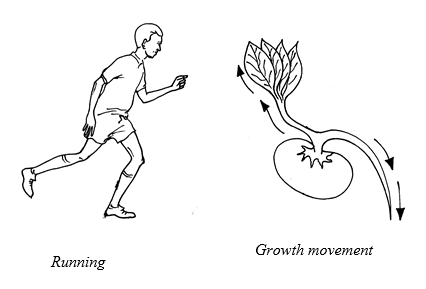
Irritability (sensitivity)
Irritability
is the ability of an organism to respond to a stimulus. Stimulus
(plural; stimuli) is anything that causes a response in an organism.
Examples of stimuli include: an alarm clock, a smell of breakfast cooking and a fly landing on your skin.
All
living things are sensitive to certain changes in their surroundings,
that is, they are aware of what is happening around them. This is
possible because they have special organs known as sense organs by which
they detect these changes.
Examples of sense organs include: eyes for vision (sight); skin for temperature, touch, pressure detection; tongue for tasting; nose for smelling; and ears for hearing and body balance.
Plants do not have sense organs but are still able to detect and respond to things like gravity, water and light.
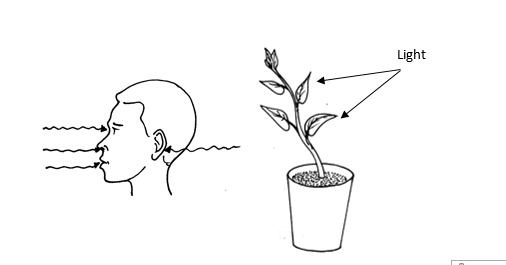
Feeding (Nutrition)
All living things need food to provide energy for such activities such as growth, repair and health.
Animals
get their food by eating other living things or food materials that
were once living things. Herbivores (e.g. rabbits) eat plants,
carnivores (e.g. lions) eat other animals, and omnivores (e.g. humans)
eat animals and plants. Plants make their own food through the process
called photosynthesis.
The process of taking in food, synthesizing it, digesting and oxidizing it to release energy or build the body is called nutrition.
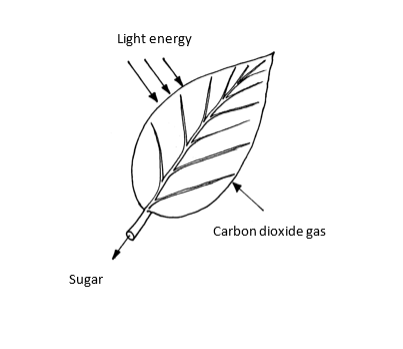
Respiration
Respiration is the breaking down of food materials within cells to release energy.
Respiration
usually involves the use of oxygen. All living things need energy for
movement, growth and development, and functioning of body organs.

Excretion
All
living things produce wastes such as carbon dioxide, water, urea,
ammonia etc.. Some of these chemicals if left to accumulate in the cells
would seriously poison the living organism hence they need to be
removed. The process of removing metabolic waste products from the body
of living organisms is called excretion.
Waste products are removed from the body by excretory organs such skin, kidneys, lungs and liver.
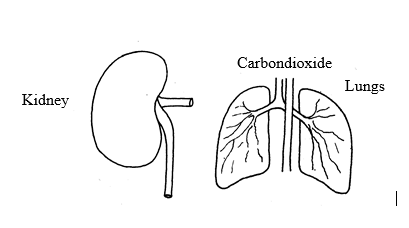
Reproduction
Reproduction
is the process by which living things produce new individuals of their
kind. All living things reproduce, to replace organisms lost by death.
If a group of organisms does not reproduce fast enough to replace those
which die, the group becomes extinct. Reproduction ensures continuation
of life when parent generation dies.
Human
beings bear babies; birds hatch chicks; and plants produce seedlings as
new organisms, which eventually grow to mature organisms to replace
those lost by deaths.
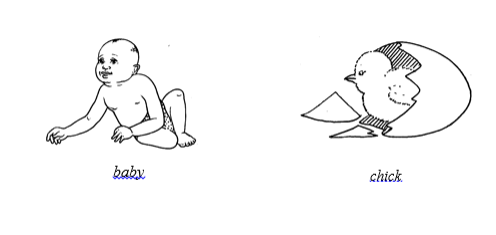
Growth
Growth
is defined as an irreversible (permanent) increase in size and dry
weight of an organism involving differentiation. All living things need
food in order to grow and build up their bodies.
Animals grow until they reach certain adult size, but most plants can grow continuously throughout their lives.
Examples of growth in living things
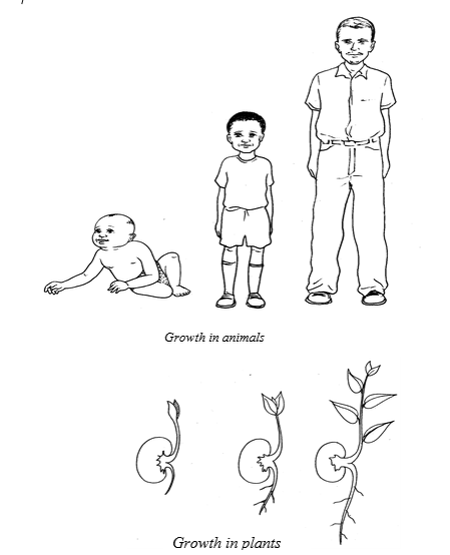
Example 1
Examples of living things
Fucus (bladderwrack)

Streptococci
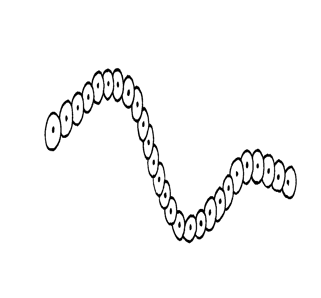
Diplococci

Streptobacilli
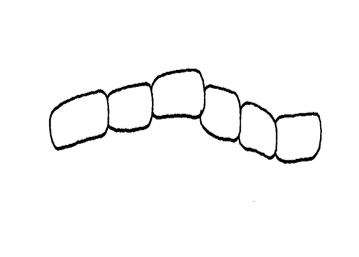
Grass snake
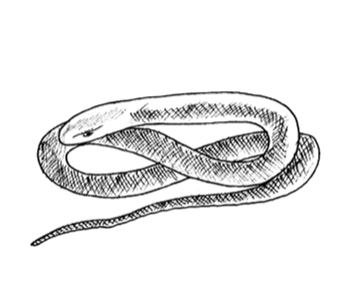
Man
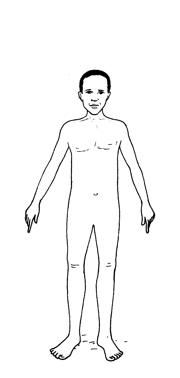
Cow
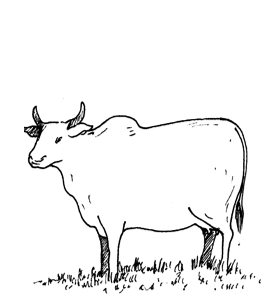
Flagellate bacilli

Mushroom
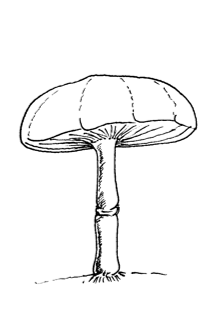
Male fern
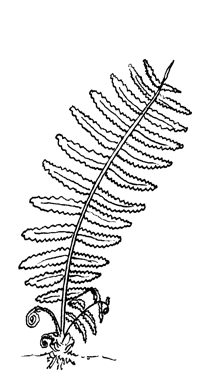
Oak
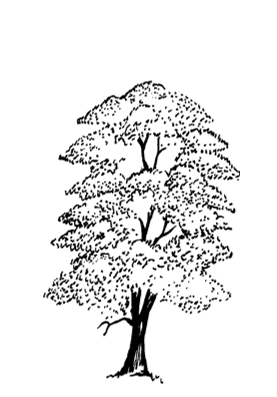
Amoeba
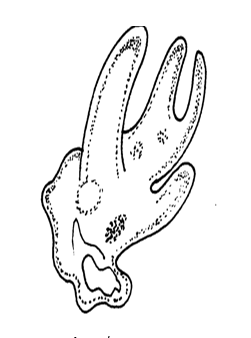
Fucus (bladderwrack)

Dog fish
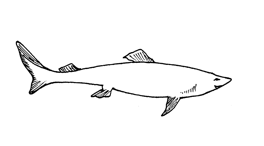
Spider
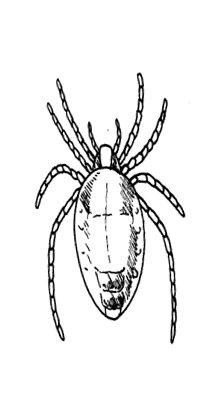
Butterfly
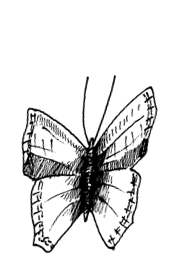
Crab
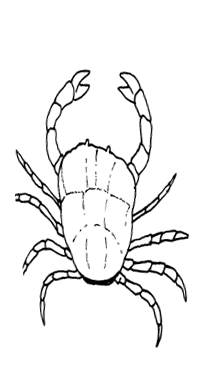
Millipede

Frog

A table of differences between living things and non-living things
| Living things | Non-living things |
| They respire | Do not respire |
| They grow | Do not grow |
| They respond to stimuli | Do not respond to stimuli |
| They reproduce | Do not reproduce |
| They excrete | Do not excrete |
| They feed | Do not feed |
| They move | Do not move |
Branches of biology
Biology is a subject and it has many branches. The main branches are botany and zoology Botany is a branch of biology which deals with the study of plants. A person who studies botany is called a botanist Zoology is a branch of biology which deals with the study of animals. A person who studies zoology is called a Zoologist
Other branches of biology
Mycology: this is the study of fungi. A person who studies mycology is called a mycologist
Bacteriology: this is the study of bacteria. A person who studies bacteriology is called a bacteriologist.
Virology: this branch of biology deals with the study of viruses. A person who studies virology is called a virologist.
Immunology: is concerned with body defense against diseases and foreign substances. A person who studies immunology is called an immunologist.
Entomology: refers to the study of insects A person who studies entomology is called an entomologist.
Parasitology:this branch deals with study of parasites and their effects on living organisms. A person who studies parasitology is called a parasitologist.
Dermatology: It is concerned with medical study of skin and its diseases. A person who studies dermatology is called a dermatologist
Ecology: Is
a branch of biology that deals with relationship among living things
and between organisms and their surroundings. A person who studies
ecology is called an ecologist
Anatomy:Is the study which deals with structure of living things. A person who studies anatomy is called anatomist
Diagram representing branches of Biology
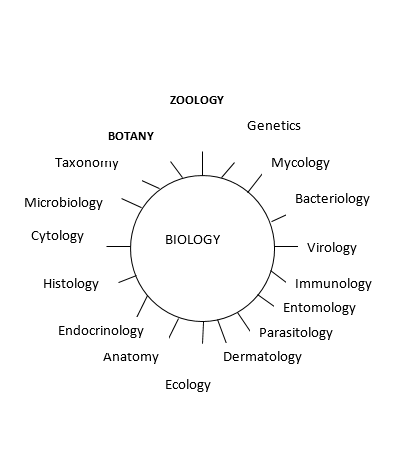
Endocrinology:
This is the study of structure of endocrine glands and the hormones
associated by them. A person who studies endocrinology is called an endocrinologist.
Histology: Is the study of structure of tissues A person who studies histology is called an histologist
Cytology: Is the study of structure, composition and function of cells. A person who studies cytology is called a cytologist.
Microbiology:
Is devoted to the study of organisms that can be seen only with a
microscope e.g. bacteria, viruses, some fungi and some protoctists. A
person who studies microbiology is called a microbiologist.
Taxonomy: Is the scientific classification of organisms. A person who studies taxonomy is called a taxonomist.
Genetics: Study of heredity and variation in organisms. A person who studies genetics is called geneticist.
The Importance of Studying Biology
Explain the importance of studying biology
The study of biology is very important to man.
The following is an outlines of why the study of biology is important:
- It helps us to understand ourselves better since we are living things.
- Skills and knowledge of biology can be applied to other scientific fields such as agriculture, forestry medicine, nutrition, pharmacy and veterinary science.
- It helps us to understand our environment better and principles of conserving it.
- Biology helps to answer some important questions such as, what do living things need, why do we resemble with a monkey, why do frogs lay many eggs but only few become adults?
- Knowledge of biology helps us to improve our health since causes, symptoms, transmission and treatment are of various diseases are studied in biology.
- Knowledge of biology helps us to avoid our selves from magical beliefs, superstitions and other traditional taboos.
- Knowledge of genetics helps us to clear some common doubts about certain inherited characteristics e.g. albinism, sickle cell anaemia, haemophilia, etc.
- Knowledge of the structure and chemical composition of the organisms enable us to acquire food, clothes and shelter from them.
Relationship between Biological Science with other Related Fields
Relate biological science with other related fields
Veterinary science (Veterinary medicine)
Veterinary medicine is the branch of medicine that deals with the diseases of animals. Doctors that treat animals are called Veterinarians.
Veterinarians are trained to prevent, diagnose and treat illness in
large and small animals. Their work is valuable because many animal
diseases can be transmitted to human beings e.g. rabies, tuberculosis,
tularemia (rabbit fever) anthrax etc. Basic knowledge of biology is
required for successful study of veterinary science.
Agriculture
Agriculture
is concerned with production of useful plants and animals through
farming system. Agriculture provides us with almost all our food. It
provides materials for clothing and shelter. It provides materials used
for making many industrial products such as paints and medicines.
Agriculture uses knowledge of biology to improve plant and animal
breeding. Genetically modified organisms (GMOs) ensure better quality,
early maturity and high yield products. Crop and animal diseases and
pests can only be overcome by applying biological knowledge.
Forestry
A forest
is a large area of land covered with trees. It is much more than just
trees. It also includes smaller plants such as mosses, shrubs and wild
flowers. Forestry is the science of managing forest resources for human
benefit. The practice of forestry helps maintain an adequate supply of
timber and management of such valuable forest resources such as water,
wildlife, grazing areas and recreational areas.
Biology
helps in improving the qualities of the trees through manipulating the
genetic constitution of the particular plant species.
Climate,
soil and water determine the type of plants to be grown which entirely
applies biological knowledge. Use of biological control to combat tree
pests applies biological principles.
Pharmacy
Pharmacy is the profession concerned with the preparation, distribution and use of drugs. Members of this profession are called pharmacists or druggists.
Pharmacy also refers to a place where drugs are prepared or sold The
drugs are made depending on the chemical composition of the body of an
organism and how they can react with such medicines. Knowledge of
biology also helps to know the effects of drugs on living things
(pharmacology) and possible remedies to be taken.
Medicine
Medicine
is the science and art of preserving health and treating illness.
Medicine is a science because it is based on knowledge gained through
careful study and experimentation. It is an art because its success
depends on how skilfully medical practitioners apply their knowledge in
dealing with patients. The goal of medicine include saving lives,
relieving suffering and maintaining the dignity of sick people.
Biological knowledge helps the doctors, surgeons and nurses to diagnose,
treat and prescribe the right medicine to cure the disease.
Biological
knowledge will also help them to offer education to the patients on how
to prevent themselves from the diseases e.g. purifying drinking water,
vaccination against polio, measles and other diseases.
Nutrition
Nutrition
is the science which deals with food and how the body uses it. People,
like all living things need food to live. Food provides substances that
the body needs to build and repair its tissues and to regulate its
organs and systems. Food also supplies energy for every action we
perform. Knowledge of biology helps to identify the type of food
required by an individual based on its quality and quantity.
A table showing differences between plants and animals
| PLANTS | ANIMALS |
| (i)They are autotrophic, i.e. they can make their own food | They are heterotrophic i.e. they feed on complex organic compounds |
| (ii)Contain chlorophyll, can undergo photosynthesis. | No chlorophyll, cannot undergo photosynthesis |
| (iii)Growth occurs in some parts only i.e. root and shoot tips. | Growth occurs in all parts of the body. |
| (iv)They have branched bodies | They have compact bodies |
| (v)No nerves, muscles, blood system or special sensory cells. | Have nerves, muscles, blood system and special sensory cells. |
| (vi)Usually rooted in the ground and do not move from place to place. | Not rooted in the ground, move to get food and escape enemies. |
| (vii)Have no digestive system | Have digestive system needed to break down food |
| (viii)Cells of plants have cell walls | Cells of animals have no cell walls |
Activity 1
Living and non-living things
Aim: to explore living and non-living things around the school
Procedure:Go around the school surroundings. Identify varieties of living and non living things you see.
Make a list of living and non – living things in a tabular form as shown below.
| List of living things | List of non-living things |
Exercise 1
Self test questions
1. Biology is derived from two Greek words namely,
- Logos and Lagos
- Logos and phyla
- Bios and logos
- Bios and phyla
2. The following are characteristics of living things except
- Nutrition
- Reproduction
- Growth
- Dancing
3. A branch of biology which deals with the study of plants is called
- Botany
- Dermatology
- Ecology
- Zoology
4. A person who studies zoology is called
- Botanist
- Virologist
- Zoologist
- Ecologist
5. All of the following are living things except
- Bean plant
- Sand
- Lizard
- Rat
6. Which of the following is the most important basic difference between plants and animals?
- Growth
- Reproduction
- Nutrition
- Movement
7. Which of the following is out of place?
- Excretion
- Virology
- Endocrinology
- Zoology
8. The following is the best description about irritability
- Removal of waste products
- Ability to move from one place to another
- Increase in size of an organism
- Ability to respond to environmental changes
9. The picture below best represents
- Reproduction
- Movement
- Nutrition
- Sensitivity
Picture
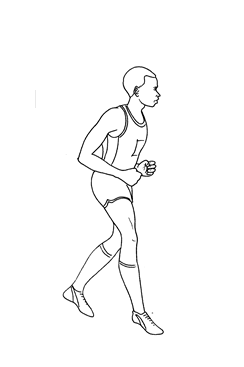
10.
A person picks up a telephone after hearing it ringing. Which
characteristics of living things is the person showing by this action?
- Excretion and reproduction
- Respiration and nutrition
- Irritability and movement
- Respiration and growth
11. For each of the following write TRUE if the statement is true and FALSE if the statement is not true.
- Biology is a branch of science which deals with the study of living things__________________
- Dancing is one of the characteristics of living things _________________
- A person who studies ecology is called mycologist _________________
- Knowledge of biology can help us to improve our health ________________
- Living things normally increase in size. The process of increasing in size is called growth ________________
12 (a). What do you understand by the following terms?
- Biology
- Cell
- Bacteriology
(b) List down seven (7) characteristics of living things.
13. Give seven differences between living things and non living things.
- Outline the importance of studying biology
- Why are a mosquito and a dog considered to be living things?
14. Give four differences between plants and animals.
- A motor car moves from place to place, obtains energy by combining petrol with oxygen and produces waste gases. Does this mean cars are alive? Look through the seven features, of living things and list those which do not apply to cars.
15. (a) What do you understand by the following terms?
- Pharmacy
- Forestry
- Veterinary medicine.
(b) State how biology is related to the following science fields
- Pharmacy
- Veterinary medicine
- Agriculture
- Forestry
- Nutrition
- Medicine
Scientific Processes in Biology
Biology,
just like other science subjects, involves carrying out experiments.
When studying living things simple observation can be made by using our
own senses i.e. sight, smell, touch, taste and hearing. The senses can
be detected by our sense organs i.e. eye for sight, nose for smell, skin
for touch, tongue for taste and ear for hearing.
To Use Own Sense Organs to Make Correct Observations
Use own sense organs to make correct observations
The body sense organs
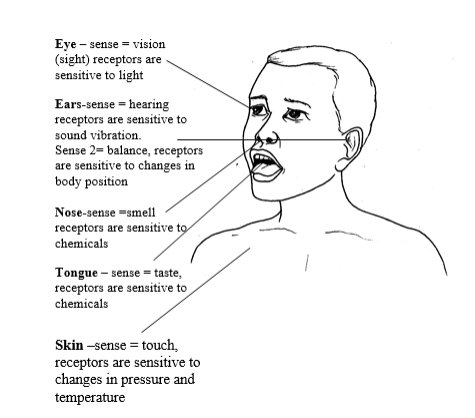
Measurements of Mass, Length, Temperature and Pulse Rate
Take measurements of mass, length, temperature and pulse rate
Measurements: When carrying out biological investigation measurements like mass, time, temperature, and length are unavoidable.
Instruments used for various measurements:
- Beam balance – for measuring mass
- Thermometer – for measuring temperature
- Clock/stopwatch – for measuring time
- Ruler – for measuring length
- Pulse rate can be measured by using a stethoscope or by pressing the fingers firmly on the skin.
The
study of biology like any the science subject involves scientific
processes. The scientific processes involved in the study of biology
include observation, measurement and experimentation. Through these processes the study of biology becomes possible.
OBSERVATION
Through
observation we can learn many scientific phenomena. Observation is made
by using our own sense organs. There are five sense organs in the human
body which are eyes, ears, the nose, the tongue, and the skin. Each of
these organs is specific to a certain type of observation.
The following are sense organs and their associated functions in observation.
Eyes
How
can you differentiate between the colors of an egg from that of a ripe
pawpaw? In this case in order to answer this question correctly, you
must be able to make correct observation. By using your eyes you can
observe differences in colors of the two things given and then tell
their differences.
We
use our eyes as a sense organ for vision. By using our eyes we are able
to see and differentiate sizes, colours and shapes of various organisms
and hence we can learn about them.
Ears
How
can you distinguish between the sound produced by a singing bird and a
roaring lion? Sometimes you can just use your ears to study various
biological concepts. For example many organisms produce different sounds
which we can use to identify them.
Therefore,
it is easy for a biologist to know an organism just by hearing the
sound without even seeing it. This proves how your ears are very
important organs in scientific studies because they are used to identify
and differentiate sounds of various living organisms.
Nose
Sometimes
in the scientific study we need to smell in order to identify and
distinguish between various things. For example, how can you distinguish
the smell of a ripe banana from that of a ripe pineapple? As a
scientist you must be able to use your nose as a sense organ effectively
and successfully. BUT avoid smelling anything in the laboratory without
the permission from your teacher or laboratory technician.
Tongue
We
use tongue to taste various things. By use of tongue we can
differentiate various tastes and be able to discover the type of the
taste concerned. For example, one can differentiate salt from sugar
solutions by just tasting using the tongue. BUT avoid tasting anything
in the laboratory unless you are told do so by the teacher or laboratory
technician.
Skin
We
can use the skin as a sense organ to detect heat, temperature, pressure
and even pain. For example, during a hot day you feel hot while during
cold days you feel cold. Even if you close your eyes, and someone rubs
your skin using a block of ice, you can simply tell it by just feeling
the coldness it imparts to the surface of your skin.
This
group of students are conducting an experiment on ‘food tests’ in the
school laboratory. Can you tell the sense organs they are using in their
study?
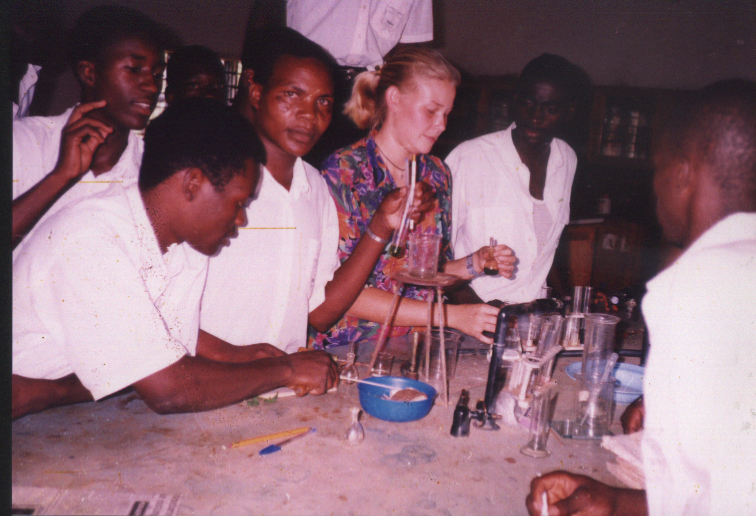
MEASUREMENT
Though
we can use our sense organs to make observations, the observations
alone are not so reliable. Every sense organ has its weakness. Since
science lies upon measurable quantities there is a need of measurement.
Scientists have been able to design ways to take measurements of various
things. Some of the quantities which can successfully be measured
include mass, temperature, length and pulse rate.
Measurement of length
We
can use eyes to observe the length of various objects. However, our
eyes can just tell which object is longer than the other but can not
tell us what the exact length of each object is. Tape measure is one of
the common instruments that are used for measuring length in our every
day life.
Tape measure, an instrument for measuring length
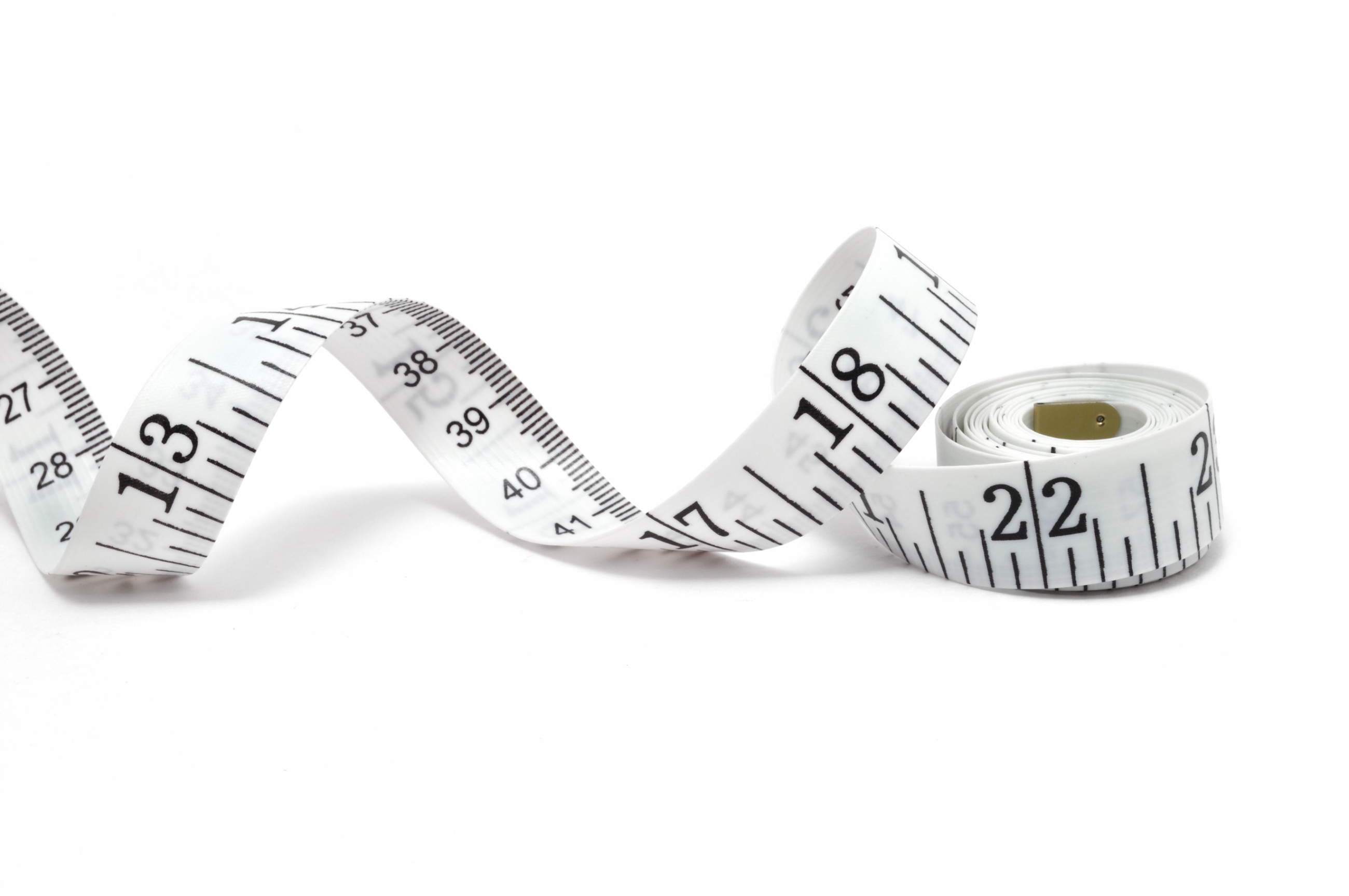
Measurement of mass
A
scientist or biologist must have a standard way of measuring mass of a
substance. Sense organs cannot give us the true value of mass of a
substance. This can be done by using beam balance which is a special
instrument for measuring mass of a substance.
Beam balance
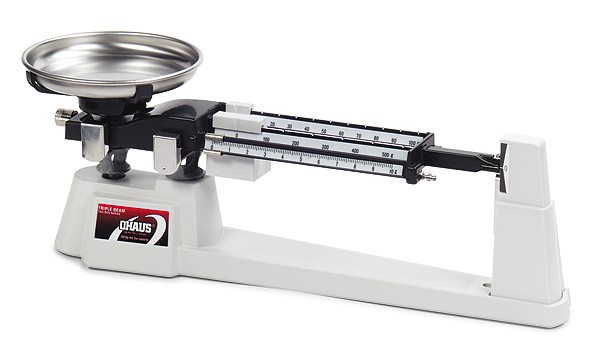
Measurement of temperature
We
can take the measurement of temperature of a substance just by using
our sense organs. For example, by touching something you can tell
whether a particular thing is hot or cold. However, you cannot tell
exact temperature of an object.
Therefore,
to be able to know the exact temperature you need to use an instrument
specially designed for measuring the temperature. This is instrument is
the thermometer. Using thermometers we are able to know the exact
temperature of an object.
Thermometer
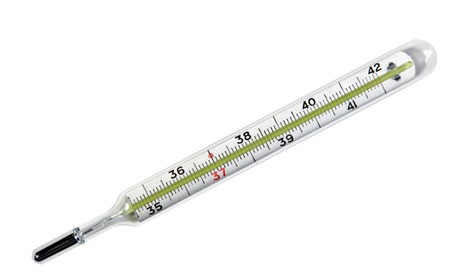
Measurement of pulse rate
Pulse
rate refers to average beating of your heart. You can find how fast
your heart is beating, that is your heart rate, by feeling your pulse.
How to measure your pulse rate
- Sit down comfortably on a chair with the palm of your hand facing upwards.
- Gently place the index and middle fingers of your other hand on your wrist (see the diagram below). Can you feel your pulse as a repeated throb?
- If necessary change the position of your finger until you can feel your pulse rate well. Count the number of heart beats in one minute.
- Repeat step 3 four times.
- Write down the number of beats per minute.
- Work out the average. This is what is called average heart rate per minute. It tells you how fast your heat is beating.
Measuring the pulse rate
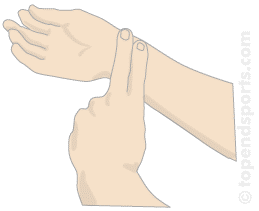
EXPERIMENTATION
Biology
as a science subject involves practical work. In every area of biology,
experimentation is necessary. However, there are several procedures to
be followed in conducting any scientific investigation. These procedures
include the following:
Identification of a problem (problem statement)
In
our day to day life we often come across questions or phenomena which
require explanations. Such questions or phenomena are of interest to a
biologist who will seek to provide answers to them.
The phenomena could be for example; it
was observed that the harvest of tomatoes in Juma’s garden was low
despite frequent irrigation, correct planting techniques, timely
planting and adequate sunlight. So, what was the problem with Juma’s garden?
This is the problem to be investigated by the biologist in order to come up with an answer.
Hypothesis formulation
Hypothesis
is a tentative explanation for the observation made. Using your example
of low yield in the tomato garden, the possible hypothesis could be poor
yield could have been caused by low soil fertility and therefore
application of the fertilizer could increase harvest of the tomatoes in
the garden. This hypothesis must therefore be tested by experimentation if it has to be a scientifically acceptable explanation.
Experimentation
An
experiment is a series of investigation intended to discover
relationship or certain facts that may lead to finding a problem. In the
case of low harvest of tomatoes, you are first supposed to construct a
plan of investigation as follows:
Select
two plots, A and B, from the same garden and subject both of them to
the same conditions as before. In plot B apply fertilizers while in plot
A don’t put any fertilizers (plot A will be your control plot).
Observation and data recording
After
setting up an experiment, a researcher must observe and record data.
Observation is done by using sense organs such as ears, eyes, nose and
skin. The researcher must record whatever he observes. The researcher
obtained X kg in plot A and Y kg in plot B.
Interpretation of data
Once
a researcher has collected data, he should try to explain the meaning
of data in relation to the purpose of the experiment. In the tomato
garden experiment, the harvest in plot A was little compared to the
harvest in plot B.
In
these plots, all the conditions were the same except that in plot A no
fertilizers were applied while in plot B fertilizers were applied.
Therefore, high harvest in plot B was a result of applying fertilizers.
If this experimentation is correct, then the same results should be
obtained if the experiment is repeated under the same conditions.
Conclusion
At
the end of investigation, a researcher must draw conclusion. This
conclusion is based on the collected data. The conclusion is either
confirmation or rejection of the hypothesis under investigation.
In
the tomato garden experiment, the results have shown that application
of fertilizers has increased the harvest of tomatoes. Therefore, low
harvest of tomatoes was caused by poor soil fertility.
Summary
The following diagram summarizes the scientific process.
The scientific process

Activity 2
Aim: observing different conditions and substances using various sense organs: Materials: flowers of different colors, hot water, ice, a bottle of perfume, whistle, lemon, knife.
Procedure:
- Take the different flowers provided. Name the color of each flower.
- Open the bottle of perfume, try to smell it. What is the smell of the perfume?
- Use a knife to cut the onion. Where in your body do you feel sensation when cutting the onion?
- Take two beakers. One of the beakers put hot water and the other put ice block with a little amount of water. Dip a finger in a beaker containing hot water and do the same for a beaker containing ice block. What sensation did you feel in the two beakers?
- Take a whistle and try to blow it using your mouth. What is coming out of the blow?
For
each of the stimulus experienced in procedures 1-5 name the sense organ
involved in detection of each stimulus and present your results as
shown in the table below. The first option has been done for you as an
example.
| Procedure | Stimulus | Sense organ involved for detection |
| 1 | Colour | Eyes |
| 2 | ||
| 3 | ||
| 4 | ||
| 5 |
Activity 3
Aim: measurement of length and masses Materials: meter rule, Tilapia fishes, board, weighing scale
Procedure:
- Take 5 Tilapia fishes and number them as 1 to 5.
- Take Tilapia fish number 1, place it on a board and measure its length.
- Take Tilapia fish number 1, put it on a weighing scale and record its mass.
- Repeat steps 2 and 3 for Tilapia fish number 2, 3, 4, and 5.
Present your results in a tabular form as shown
| Tilapia fish no | Length (cm) | Mass (g) |
| 1 | ||
| 2 | ||
| 3 | ||
| 4 | ||
| 5 |
Activity 4
Questions
- Which Tilapia has the greatest length?
- Which Tilapia has a greatest mass?
- Is there any Tilapia fish which has a shorter length but has a greater mass than the longer one?
- Arrange the fishes in order of their increasing
One of the following can be used to make observation during scientific investigation
- Nose
- Blood vessels
- Teeth
- Lung
All of the following are used for various measurements except
- Beam balance
- Thermometer
- Ruler
- Hand lens
Which of the following is not true?
- Eye for sight
- Skin for touch
- Tongue for vision
- Nose for smell
Body temperature can be measured using
- Chemical balance
- Stop watch
- Measuring cylinder
- Thermometer
A third step in scientific investigation is
- Hypothesis
- Problem identification
- Experimentation
- Conclusion
Hypothesis means
- An idea
- A school of thought
- An intelligent guess
- An opinion
Which of the following will be a sequence to follow in a scientific procedure after ‘experimentation’?
- Problem identification
- Conclusion
- Observation and data recording
- Hypothesis formulation
An experiment is carried out to test
- Hypothesis
- Theory
- Law
- Conclusion
Name the instruments used to measure
- Mass
- Length
- Pulse rate
- Temperature
Name
the five sense organs used to make observation during scientific
investigation and state the senses perceived by each sense organ.
Outline the six steps involved when carrying out scientific investigation.
Define the following terms:
- Hypothesis
- Experimentation
Simple Biological Experiments
Carry out simple biological experiments
Activity 5
Carry out a simple biological experiment in relation to the above topics.
The Biology Laboratory
The Biology Laboratory
Describe the biology laboratory
A biology laboratory is a room or building specially designed for carrying out biological experiments.
A biology laboratory has:
- Large windows and big space to allow enough air and light for better ventilation and visibility respectively.
- Shelves – for keeping chemicals, specimens, apparatus and models.
- Supply of gas, electricity and water
- Working benches
- An emergence door in case of danger occurs.
- Preparation room
The biology laboratory rules
Biology
laboratory has sophisticated instruments which need to be handled with
special care. Chemicals which are being used are potentially harmful and
they need a special attention when working with them.
The following laboratory rules should be adhered to:
- Don’t enter in the laboratory without permission from the teacher or laboratory technician.
- Do not play, or run unnecessarily in the laboratory.
- Do not eat or drink in the laboratory.
- Do not use chemicals or handle apparatus or specimens without instruction from the teacher or laboratory technician.
- Any accident or damage of apparatus must be reported.
- Label chemicals and specimens to avoid confusion.
- Always keep flammable substances away from flames.
- Turn off water and gas taps after use.
- Never point the open end of the test tube to your fellow or yourself when heating.
- Never smell substances, specimens, chemicals or gases directly.
- Wash your hands with soap after the experiment.
- Clean the apparatus and benches after the experiment.
- Return the apparatus and chemicals to their normal position after use.
The Difference between the Biology Laboratory from other School Facilities
Distinguish the biology laboratory from other school facilities
Difference between biology laboratory and other school facilities:
- Dissecting kits
- Models of different organs and systems
- Refrigerators and ovens for storing and drying specimens
- Animal keeping units
- Chemicals designed for biological experiments
- Preserved specimens of living things
- Gases, electricity and water supply.
Aim: To differentiate biology laboratory from other school laboratories or facilities
Procedure:
let students visit the chemistry laboratory, physics laboratory, the
school library, classroom and school store and allow them to perform the
following.
- Make a list of items that are found in each of the above named areas.
- Compare the list with those which are found in the biology laboratory.
- Construct a table of differences showing a list of items which are found in the biology laboratory and those which are found in the above named school facilities as shown below.
- List items which are found in both the biology laboratory and other school facilities listed above and compare the differences.
| Facility / Building | Items |
| Biology laboratory | |
| Chemistry laboratory | |
| Physics laboratory | |
| School library | |
| Classroom | |
| School store |
Interpretation of Warning Signs on Containers of Laboratory Chemicals and Apparatus
Interpret warning signs on containers of laboratory chemicals and apparatus
Warning signs on laboratory chemicals and apparatus
Some
of the chemicals and apparatus used in biology laboratory may be
harmful or dangerous. Before starting using any chemical you must know
whether the chemical is toxic, flammable, oxidizing, explosive or
irritant/harmful. To help you recognize such dangerous substances, the
containers of modern chemicals carry special chemical warning signs as
indicated below.
Toxic
Toxic
substances can cause death. They may be poisonous when swallowed,
breathed in or absorbed through the skin. Examples of toxic substances
include acids and alkalis, lead II acetate and potassium dichromate.
The symbol for toxic substances is represented as shown above.
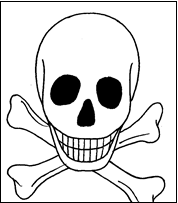
Flammable
Flammable
substances are substances which can catch fire easily. Examples of such
substances include petrol, alcohol, Thomas Baker (Phosphorus yellow or
phosphorus red) and potassium metal. These substances normally evaporate
fast and therefore should not be brought near open flames. The symbol
is as indicated above.
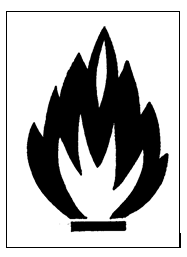
Corrosive
Corrosive
substances attack and destroy living tissues. They may destroy the
floor, desks as well as metals, examples of corrosive substances are
concentrated acids, e.g. sulphuric acid, hydrochloric acid, nitric acid
and concentrated alkalis e.g. sodium, potassium and ammonium hydroxides.
If by accident a corrosive substance comes into contact with your skin,
go to the sink and wash with a lot of water. The symbol is shown above.
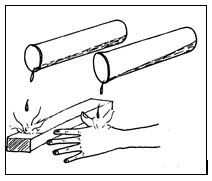
Oxidant
An
oxidant is a chemical or substance which accelerates burning. Small
fires can be made big in the presence of oxidizing agent. Examples of
oxidizing agents include potassium permanganate, potassium chlorate, and
zinc nitrate.
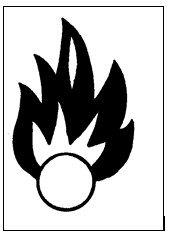
Explosive
An explosion is a forceful rapid reaction which involves random throwing of particles
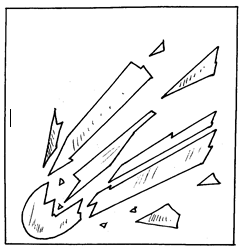
Harmful or irritant
Harmful
substances have a long term effect. They do not kill immediately. They
have a cumulative effect. Therefore careful handling is required.
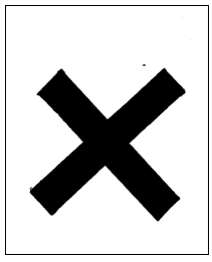
Irritant
substances cause pains on the skin or eyes. They can endanger one's
health if they come into contact with the skin or eyes for too long.
Examples of harmful substances include lead chloride, lead nitrate, lime
water ferrous sulphate and manganese (IV) oxide
Examples above of some chemical containers with their warning signs.
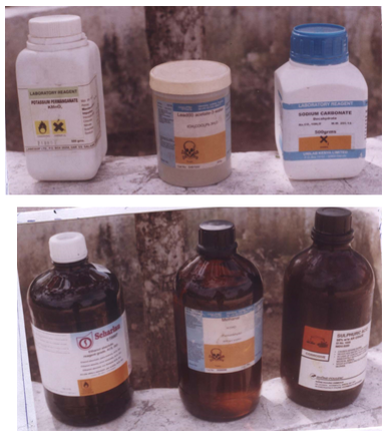
Activity 6
Aim: to investigate chemical warning signs Requirements: varieties of chemical containers Procedure: collect chemical containers. Observe them carefully and identify chemical warning signs on them.
Record your results as shown in the table that follows.
| Chemical container | Warning sign |
The Common Apparatus and Equipment of Biology Laboratory
Identify common apparatus and equipment of biology laboratory
Some apparatus and equipment used in the biology laboratory.
- Microscopes
- Hand lenses
- Thermometers
- Dissecting kits
- Mortar and pestle
- Dissecting trays
- Delivery tubes
- Measuring cylinders
- Bunsen burners
- Test tubes
- Specimen bottles
- Ovens
- A pair of scissors
- Chemical balance
- Funnel
- Test tube racks
- Test tube holders
- Beakers
- Forceps
- Surgical blades
- Microscope slides
- Droppers
- Spatula
- Corks
- Glass straws
- Fridge/refrigerator
- Mounted needle
- Beam balances
- Glass rods
- Scalpels
Microscope
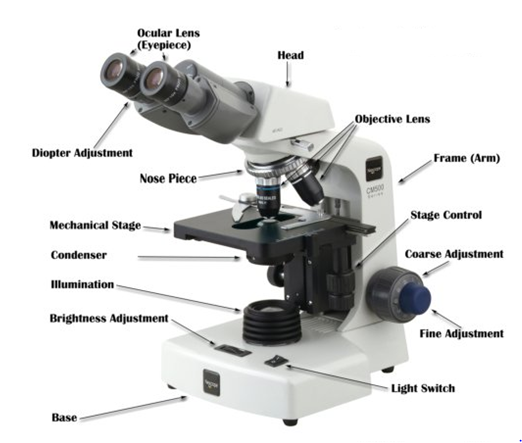
Thermometers

Hand lenses
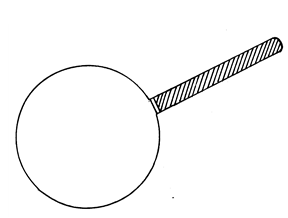
Dissecting kit
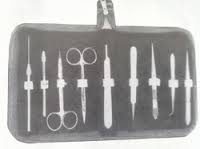
Motor and Pestle
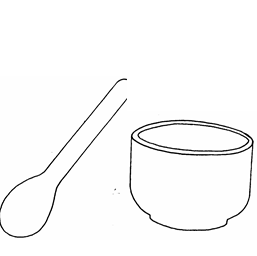
Dissecting tray
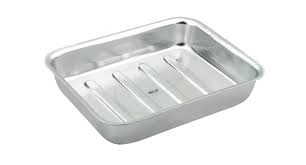
Delivery tube
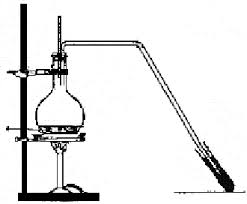
Measuring cylinder
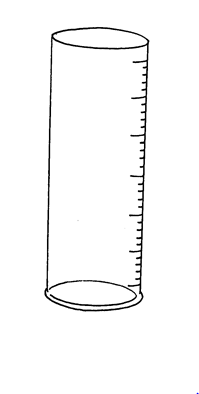
Bunsen Burner
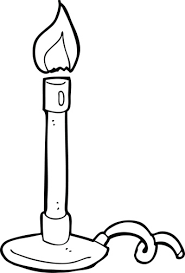
Test tube
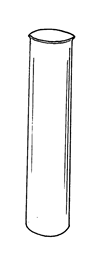
Specimen Bottles
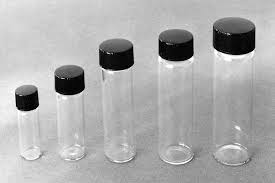
Oven
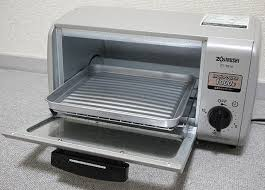
Pair of scissors
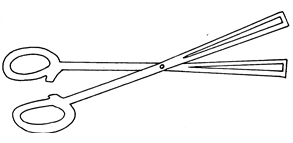
Funnel

Surgical blades
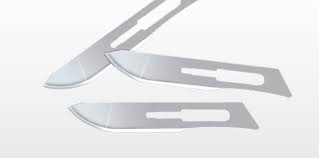
Microscopic blades
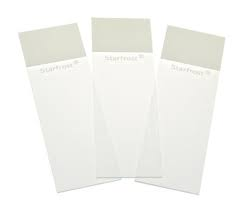
Spatula
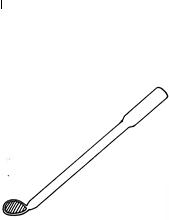
Cork
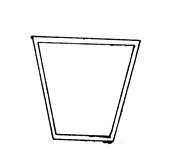
Glass straws
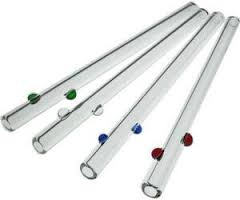
Mounted Needle

Beam balance
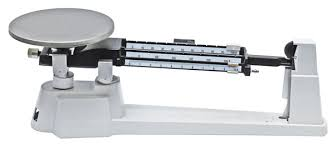
Glass rod

Scalpels

Dropping pipette
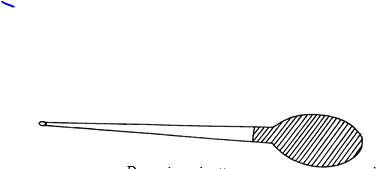
Fridge/refrigerator
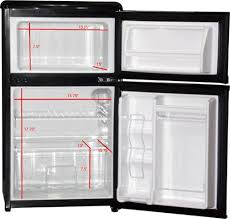
Some common chemicals used in the biology laboratory
- Benedict’s solution
- Lime water (calcium hydroxide)
- Sodium hydroxide (slaked lime)
- Cobalt chloride
- Hydrochloric acid
- Copper (II) sulphate
- Sudan III
- Alcohol
- Stains e.g. carmine red, methylene blue
- Sodium bicarbonate
- Potassium permanganate
- Iodine solution
Exercise 2
In each of the following questions write TRUE for correct statement and FALSE for incorrect statement.
- A biology laboratory is a place where biological experiments are conducted……………………………….
- Everything in the laboratory can be tasted ………………
- Warning signs can help someone to avoid accident in the laboratory………………………………………………...
One of the following is not a basic quality of the biology laboratory.
- Working benches
- Large windows and big space
- Supply of gas, electricity and water
- Kitchen
Substances which may catch fire easily are said to be
- Toxic
- Flammable
- Explosive
- Irritant
An instrument used to measure temperature of the body is called
- Chemical balance
- Measuring cylinder
- Thermometer
- Barometer
One of the following is a common reagent used in the biology laboratory
- Benedict’s solution
- Potassium iodide
- Sodium acetate
- Barium chloride
Which of the following list of instruments is not related to biology laboratory?
- Fridge, a pair of scissors, surgical blades
- Microscope, test tube, thermometer
- Dissecting kit, scalpel, beaker
- Meter bridge, pendulum bob and burette.
The warning sign shown indicates
- Explosive substance
- Oxidizing agent
- Flammable substance
- Corrosive substance

Match the items in list A with the corresponding items in list B.
LIST A
- Used for placing specimen during dissection
- An apparatus used for stirring solution
- A substance which accelerates burning
- Do not play or run in the laboratory
- A common reagent in the biology laboratory
LIST B
- Laboratory rule
- Oxidant
- Sudan III
- Dissecting kit
- Glass rod
What do you understand by the following terms?
- Laboratory
- Warning sign
Draw warning signs which may be used in bottles carrying a substance which is
- toxic
- flammable
- explosive
- harmful
List down any six (6) laboratory rules
State the use of the following apparatus
- Specimen bottles
- Test tube holders
- Beam balance
- Beaker
- Mortar and pestle
Draw the following apparatus:
- Measuring cylinder
- Mortar and pestle
- Funnel
- Tripod stand.
THE MICROSCOPE
Much
of the living world is too small for human eyes to see. Our eyes can
only see objects that are larger than 0.1mm. Objects with sizes smaller
than 0.1mm can be viewed by using microscopes.
What is a microscope?
A
microscope is an instrument used for viewing objects which are too
small to be seen by our naked eyes. It ranks as one of the most
important tools of science.
- Physicians and biologists, for example, use microscopes to examine bacteria and blood cells.
- Material scientists and engineers use microscopes to study the crystal structures within metals and alloys (metal mixtures) and to examine computer chips and other tiny electronic devices.
There are two types of microscopes
- Compound or light microscope
- Electron microscope
Optical or light microscope
An
optical microscope has one or more lenses that refract (bend) the light
rays that shine through or are reflected by the specimen being
observed. The refracted light rays make the specimen appear much larger
than it is.
Magnifying
glass is the simplest optical microscope, has only one lens. The best
magnifying glasses can magnify an object by 10 to 20 times.
The compound or light microscope
The
compound or light microscope uses two or more sets of lenses to provide
higher magnifications. Each set of lenses functions as a unit and is
referred to as lens system. In microscopes with only
one objective, the lens system and ocular are mounted at opposite ends
of a tube. In microscopes with two or more objectives the objectives are
mounted in a rotating nose piece connecting to the end of the tube
opposite the ocular. The person operating the microscope rotates the
nose piece to align one of the objectives with the opening in the end of
the tube.
The workings of electron and compound microscope
Electron microscope – Uses electrons to illuminate the specimen and can
reveal much more structures than light microscope can do.
Light microscope – Uses light to illuminate the specimen
Parts of the light microscope and their functions
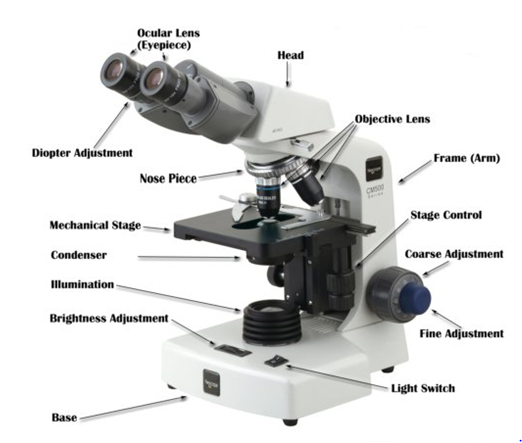
Parts of the light microscope has the following functions:
- Eyepiece – Magnify objects under observation since it consists of magnifying lenses.
- Body tube – Hollow tube attached to the arm. Its function is to hold eyepiece lens and revolving nose piece.
- Revolving nose piece – Holds objective lenses in place. Position of the objective lenses can be changed by manipulating the revolving nose piece.
- Coarse adjustment knob – It lowers and raises the body tube so that a clear image is obtained.
- Fine adjustment knob – Raises and lowers the body tube to obtain a fine focus.
- Objective lens – Brings image into focus and magnifies it.
- Stage – This is a place where specimen to be observed is placed
- Clips – Hold the slide or specimen in position
- Mirror – Reflects and directs light to the object under observation.
- Diaphragm – Is an aperture that regulates the amount of light passing through the condenser to illuminate the specimen
- Condenser – Concentrates light reflected by the mirror.
- Base or stand – Supports the microscope steadily
- Arm or limb – Supports the body tube and stage. It is used to hold the microscope
- Hinge screw – Raises and lowers the stage.
Magnification
Magnification
power is symbolized by a number and abbreviation X. For example a 10X
magnifying glass magnifies an object by 10 times. An object is magnified
by multiplying the eyepiece lens magnification and objective lens
magnification.
Example:
Magnification = eyepiece lens x objective lens magnification
= 10 × 20= X200
A table of magnification
| Eye piece lens magnification | Objective lens magnification | Total magnification |
| 5 | 20 | X100 |
| 10 | 20 | X200 |
| 15 | 10 | X150 |
| 10 | 25 | X250 |
| 20 | 20 | X400 |
How to use a microscope
- Turn on your microscope light
- Turn the nose piece so that the small (low power) objective lens clicks into place. Always start with low power lens in place.
- Place the prepared slide on the center of the stage under the clips so that the object is in the center of the opening. Make sure the cover slip is on top
- With your eye at stage level, use the coarse adjustment to bring the object and the low power objective lens as near to each other as possible. The objective lens should not touch the cover slip
- Now with your eye to the eyepiece, slowly move the coarse adjustment to increase the distance between the object and the lens. Continue this until the image is focused.
- Adjust the diaphragm so that the object can be seen as clearly as possible
- To observe the object under medium and high powers, rotate the revolving nose piece to bring the next highest objective lens into position. Make sure you hear the 'click' to ensure that the objective lens is in place. Then, focus using the fine adjustment only.
Ways of handling and carrying a light microscope
- Use both hands to carry the microscope. One hand should hold the base and the other hand should hold the arm.
- Always place the microscope on the desk or table carefully and gently and never place it at the edge of the bench.
- Keep the microscope in an upright position when using liquids or when not in use.
- Keep the stage clean and dry. If any liquids are spilled on the microscope, wipe them up immediately with a piece of tissue.
- Focus with the low-power objective lens first.
- Focus by moving the lens away from the slide, that is, by increasing the working distance.
- Consult your teacher if the lenses are dirty.(viii) Consult your teacher if the adjustments do not work freely.
- When your work is completed, move the low power objective lens into place and remove your slide.
- Keep your microscope covered when it is not in use and keep your work area clean and tidy.
ELECTRON MICROSCOPE
This
type of microscope uses a beam of electrons rather than a beam of light
to produce magnified images. Electron wave lengths are much shorter
than those of visible light. As a result electron microscopes can
resolve much finer detail than light microscope can do.
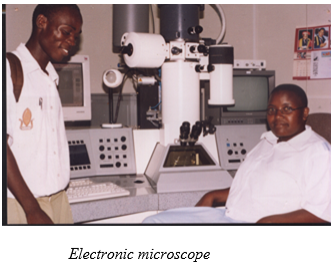
Types of electron microscopes
- Transmission electron microscope (TEM) This type of a microscope passes a broad beam of electrons through a specimen slice a few hundred angstroms thick.
- Scanning electron microscope (S E M) This microscope scans a focused beam across the surface of the specimen.
Other kinds of microscopes
Scanning probe microscope The microscope scans a specimen with a sharp point called a probe.
The ion microscope (field -ion microscope)
It is used to examine metals. It creates an image of the crystal
structure of the tip of an extremely sharp metal needle. An electric
field applied to the tip repels charged helium, neon or argon atoms
which spread out and strike a special screen. The screen glows where the
atoms strike it, forming an image of the arrangement of atoms in the
metal.
Exercise 3
Which kind of microscope uses electrons to illuminate the specimen?
- Electron microscope
- Metal microscope
- Light microscope
- Compound microscope
Which part of the microscope holds objective lenses?
TOPIC 2: SAFETY IN OUR ENVIRONMENT
First Aid
The Meaning and Importance of First Aid at Home and at School
Explain the meaning and importance of first aid at home and at school
First
Aid is an immediate help which is given to a sick or injured person
before sending him/her to the hospital for further treatment.
FIRST AID KIT
Importance of First Aid
- Saves life
- Reduces fear of death
- Brings hope and encouragement to the patient
- Relieves the victim’s pain
- Prevents the illness or injury from becoming worse
- Helps a person to recover from shock
- It shows spirit of helping each other.
Components of the First Aid Kit and their Uses
Identity components of the first aid kit and their uses
First
Aid kit is a small box which is used to keep instruments and chemicals
for First Aid. The first Aid kit should be placed in a safe and
accessible place.
Components of the First Aid kit
- A pair of scissors
- Gauze
- Assorted bandages
- Adhesive plasters
- Cotton wool
- New razor blade
- Gentian violet (GV)
- Petroleum jelly or Vaseline
- Safety pins
- Iodine tincture or spirit
- Soap
- Anti-pain (pain killers) e.g. Panadol
- Sterilized forceps and pins
- Liniment
- A pair of tongs
- Antibiotic solution
Uses of the instruments and chemicals in the First Aid kit
- A pair of scissors:is used for cutting dressing materials such as gauze, bandages·
- Gauze:is used to cover the wound to prevent dirt and micro-organisms from entering.
- Assorted bandages: are used for securing an injured part in order to protect and support it.
- Adhesive plaster:are used for covering minor wounds/cuts and grazes·
- Cotton wool:is used for cleaning and drying wounds and applying medicine·
- New razor blade:used for cutting any flaps of skin when cleaning the wound.
- Gentian Violet (GV):is used as an antiseptic to clean wounds.
- Petroleum jelly or Vaseline:used for treatment of burns
- Safety pins:used for holding/securing bandages.
- Iodine tincture or spirit:used for cleaning wounds to reduce bleeding.
- Soap:is used for washing wounds, hands and medical facilities.
- Anti-pain (pain killers):used to reduce pain.
- Sterilized forceps and pins:are used for removing splinters and grit from wounds.
- Liniment:used to reduce muscle pains.
- A pair of tongs:used for holding pieces of bandages when cleaning the wounds.
- Antibiotic solution:is used for applying in the wounds for killing micro-organisms.
FIRST AIDER
The First Aider is a specialist who gives first aid.
Qualities of the first Aider
- She/he should have ability to assess the problem and give immediate and appropriate help.
- She/he must be able to act quickly, quietly, calmly
- She/he should be sympathetic to the victim
- She/he should be able to recognize dangerous signs and give immediate help for example detecting immediately if -breathing has stopped or is failing -there is severe bleeding-poisoning-fractures
- She/he should be able to help the injured person without unnecessary movement
Precautions to be observed by the First Aider
The
First Aider should keep himself/herself safe to avoid dangers from the
patient. Some of the dangers that s/he may face include infection by
pathogens such as viruses and bacteria.So they should:
- Wear protective gloves to avoid contact with blood
- Wear eye protection
- Wear masks and gowns.
First Aid can be rendered to the victims of
- Drowning
- Muscle cramps
- Bleeding
- Poisoning
- Hiccups
- Suffocation
- Bruises Fainting Burns Sprain Bone fracture Snake bite
Procedures of Giving First Aid to Various Victims
Outline procedures of giving first aid to various victims
SNAKE BITES
A
poisonous snake has two fangs one on each side of the upper jaw. The
fangs are as sharp as needles. At the root of the fang there is a poison
gland. When the snake strikes, it jabs downwards hitting the skin with
its fangs and releases a few drops of venom.
Venom is the poison of the snake The action of striking forces the poison out and injects into the victim’s skin.

Sign and symptoms
- Immediate pain and swelling after the bite
- The skin becomes purple One or two punctured points may be seen where the fangs passed through the skin
SCORPION BITE
Scorpions
are armed with a single curved stinger in the tail. Through this, they
inject powerful venom that may produce convulsions and temporary
paralysis.
The affected area feels as though is had been burned with a hot spark
How to give first Aid to a victim of scorpion bite
- Apply tourniquet
- Put ice on the injured area to relieve pain and prevent spread of the poison
- Treat for shock
- <!--[endif]-->Rush the person to the hospital
DOG BITE
When
someone is bitten by a dog, keep the dog under observation to see
whether it has rabies. Rabies is one of the worst diseases known. It is
caused by a virus which is present in the saliva of the infected animal.
If
the animal has rabies, it will become restless, excitable, refuse to
eat and barking tone will change. Later the dog then starts barking
excessively.
How to help a victim of dog bite
- <!--[endif]-->Wash your hands well with soap and water
- Wash the wound thoroughly with soap and water to remove the animal’s saliva using running water.
- Cover the wound with clean gauze.
- Bandage it carefully
- Take the victim to the hospital.
INSECT BITES
- Spider bites : Some spiders have a harmless venom to man. But the black spiders can be dangerous to man. The injured person becomes weak and dizzy, feels nauseated and the muscles of the stomach may become hard especially in children.
- Black and fire ants, bees : When a person has been stung by e.g. bees, severe pains are felt immediately.The person may be shocked, itching and swelling may follow.
A victim of spider bite can be helped by sending him/her to the hospital.
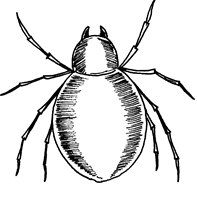
How to help
- Remove the insect’s sting
- Apply household ammonia and ice cubes
- Treat for shock
CHOCKING
Choking is caused when food or a foreign object becomes lodged in the windpipe.
Have you ever been with a person who is chocking? Did you know what to do?
When
you are with a person that is chocking, first notice if person can
talk, breath or cough. If so stay with that person until the air way is
cleared by coughing.
Caution:Do not try to slap the person on the back. The slapping may cause the food to become more deeply ledged in the wind pipe.

If a person cannot talk or cough and appears to have a difficult in breathing, apply quick abdominal thrusts i.e. Heimlich maneuver as follows;
- First stand behind the chocking victim
- Put your arms around the person, placing your firsts just below the breast bone as shown above.
- Give a series of quick, sharp upward and inward thrusts
These thrusts push in on the diaphragm and the thoracic cavity suddenly decreasing its volume.
Air pressure is exerted below the obstruction which projects it forcefully from the windpipe.
POISONING
A poison is any substance which can loss of one’s life or seriously endanger health when taken into the body.
In
every household there are different kinds of things which are
poisonous. Some are deadly even on a very small dose. Others may be more
or less harmless when taken in small quantities.
Examples of poisonous substances at home are kerosene, disinfectants, paints, medicines, artificial fertilizers, etc.
First aid to poisoning
- Look for the poison
- Identify the poison
- Neutralize the poison by giving the victim plenty of milk to drink or egg white or water.
- Induce vomiting if the poison is not strong acid or alkali as these are corrosive substance.
- If the problem is severe, rush him or her to the hospital.
BONE FRACTURE
A person with a bone fracture experience the following;
- Severe pain around the injured part
- Lack of movement
- Swelling
- Fainting or shock
How to help
- Treat for a shock
- Keep the patient absolutely quite
- Prevent further damage to injured part by using a splint.
BONE DISLOCATIONS
These are bones which have come out of place at a joint.
How to help
- Bring the bone back into fixed position
- Bandage it firmly in place so that it does not slip out again
SHOCK
Shock is a sudden violent disturbance of the mind or emotion
Causes of shock
- Bad news
- Severe illness
- Heavy bleeding
- Dehydration
- Severe burns
- Accident
Ways of preventing shock
- Lie down the person with his feet higher than his head
- Loosen the belt and shoes
- If the person is conscious give him some tea or any soft drink.
- Treat his/her wounds if any
- Stop any bleeding Keep the person warm if he/she feels cold
ELECTRIC SHOCK
How to help
- Switch off the electricity immediately
- If not possible to switch off the electricity, take the victim away from the source of electricity using a dry wooden material or rope.
- Loosen any tight clothes
- If the person is unconscious, apply mouth to mouth respiration
- Treat for shock
- Take the person to the hospital immediately
BRUISES
A bruise is an injury beneath the skin. Bruises can be identified by pain, swelling or a mark under the skin.
How to treat bruises
- Wash your hands using water and soap
- Wash the bruised part
- Apply cold clothes or ice immediately to reduce pain and swelling
- If swelling continues take the victim to the hospital
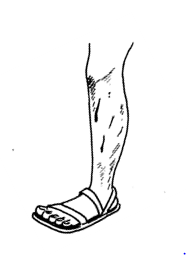
VOMITING
Vomiting is an involuntary ejection of substance from the stomach through the mouth.
Possible causes of vomiting
- Allergic reactions
- Diseases e.g. malaria
- Physiological condition e.g. pregnancy
- Food poisoning
- Unpleasant smell or taste
- Drinking a lot of water when thirsty.
How to help
- Give the person a rehydration drink or oral rehydration salts solution.
- Allow the person to have a complete rest
- If vomiting continues, take the patient to the hospital.
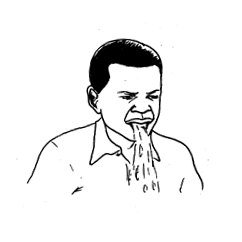
MUSCLE CRAMPS
Muscle cramps occur as a result of uncontrolled muscle spasms and contraction.
How to help
- Lay the victim down
- Massage the cramped area gently
- Apply some anti-cramp ointment to the affected area
- If the problem persists seek for a medical help
Muscle cramp can cause;
- Severe pain
- Loss of movement
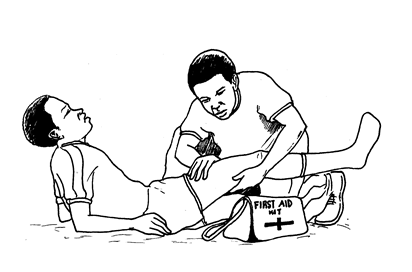
DROWNING
Drowning is a situation where someone has stopped breathing due excessive drinking of water following sinking into water.
Offering first aid to a drowned victim
- Lay the person on his back and tilt his head backwards so that his mouth falls forward
- Pull the tongue forward.Use a dry cloth to hold the tongue.
- Hold his nose close with your fingers
- Carry out mouth to mouth breathing by blowing gently into the person’s mouth about 30 times a minute but do not blow too hard.This process is called artificial respiration.
- Keep the person warm.
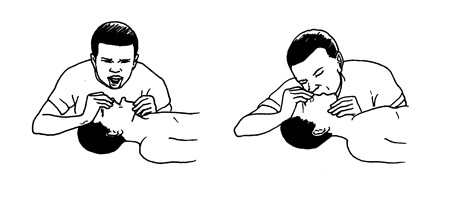
FAINTING
Fainting
is caused by a temporary fall in the blood supply to the brain,
sometimes brought on by emotional shock or prolonged standing.
How to help
- Keep the victim lying down with his/her legs raised in order to maintain blood pressure in the brain.
- Do not try to warm the victim.
- Loosen any tight clothing around the neck, chest and waist.
- Supply the patient with plenty of fresh air by fanning or mouth to mouth respiration.
- If there is no improvement rush the victim to the hospital.
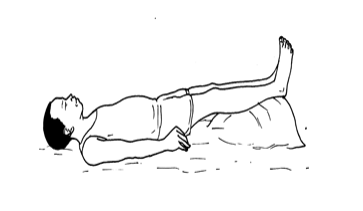
BLEEDING
How to help the victim
(a) Severe cuts
- Severe bleeding with blood flowing out rapidly must be stopped at once by pressing with fingers directly on the wound or pressing the edges of the wound together.
- Lay the victim down.
- If the wound is in a limb raise it provided it is not fractured.
- When the bleeding has slowed down press a pad of material over the wound and tie it rapidly in place.
- If blood oozes through, apply more material on top of the original pad.
(b) Simple cuts
- Wash your hands well by using soap and water
- Wash the wound
- Cover the wound with clean dressing dipped in iodine solution and bandage the wound
(c) Nose bleeding Bleeding usually occurs near the tip of the nose. The bleeding may be a result of diseases such as
- High blood pressure
- Rheumatic fever Or
- Injury
Nose bleeding is also likely to occur at high altitude as a result of cold.
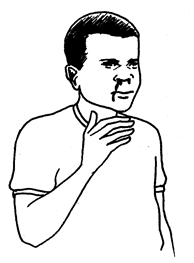
A nose bleeding victim
How to help
- Let the victim sit quiet. This makes the heart beat to slow down and hence reduces bleeding.
- Let the victim lean the head slightly backward or make him/ her lie down on his/ her back.
- Press on the side of the nose where the blood is flowing for about 10 minutes.
- Allow the victim to breath through the mouth
- Apply cold, wet compression over the nose and face. If this does not work take the victim to the hospital
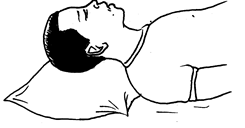
The right position to offer first aid to a nose bleeding victim
BURNS AND SCALDS
A
burn is caused by dry heat e.g. flame of hot object. A scald is caused
by a steam or boiling water. The treatment is the same for both burns
and scalds except that in scalds any wet clothing should be carefully
removed while in burns clothing should be left in place. If clothes are
burning cover the victim with a heavy blanket to cut off the air supply.
Dip
the burning limb into clean cold water or press the affected area
gently with an ice block. Do not break the blisters. Cover the injured
area with clean dry cloth to keep away bacteria entering the damaged
tissue. If the situation is serious take the victim to the hospital
immediately.
CHEMICAL BURNS (ACIDS AND ALKALIS)
How to help
- Strip off all clothing which has been contaminated by the chemical.
- Wash the affected area with plenty of water.
- Apply moist packs soaked in a weak solution of baking soda.
- Vinegar can be used for alkaline burns.
HICCUPS
Hiccups is due to involuntary contraction of the respiratory muscle, giving a characteristic sound
How to help
- Pulling out the tongue
- The victim may swallow finely crushed ice
- Holding a breath for a long time may also help
- Children can be given a teaspoonful of a weak solution of sodium bicarbonate or lemon juice.
Exercise 1
A small box which is used to keep first Aid instruments is called.
- Double-cross
- First Aid
- Re-cross
- First Aid kit
A person who gives First Aid is called
- First Aid kit
- First Aider
- A calmer
- A planner
A snake injects poison into the victim’s body using
- Venom
- Nails
- Fangs
- Tail
Which of the following is expected to happen if blood supply to the brain is reduced?
- Choking
- Shivering
- Fainting
- Vomiting
A victim who goes into shock should be given the following First Aid
- Kept moving
- Sent to hospital
- Given a heavy blow
- Given a fluid
A condition in which a person has a difficult in breathing due to swallowing excess water is called
- Choking
- Drowning
- Fainting
- Hiccups
The following apply to a person who has taken poisoned except
- Identify the poison
- Induce vomiting
- Give plenty of milk
- Eating plenty of pepper
Involuntary contraction of the respiratory muscles giving a characteristic sound is called:
- Bone dislocation
- Hiccups
- Shock
- Fainting
Write TRUE or FALSE for the following
- First Aid kit is an immediate help which is given to a sick or injured person before sending him/her to the hospital _________
- One of the importance of First Aid is to give hope the victim _________
- A good First Aider should have the ability to recognize dangerous signs ___________________
- Venom is the poison of the snake __________________
- Liniment is used to reduce muscle pains _____________
- It is not necessary to offer First Aid to a snake bite person _______________
- Giving First Aid prolongs the problem ______________
What do you understand by the following terms?
- First Aid
- First Aid kit
- Venom
- Fainting
- Choking
State and list the below;
- State any four importance of the First Aid
- List down five components of the First Aid kit
- State any four qualities of the First Aider
What are the functions of the following First Aid instruments?
- Cotton wool
- Iodine tincture
- Soap
- Assorted bandages
- Petroleum jelly
How can you administer First Aid to the following victims?
- Snake bite
- Drowning
- Fainting
- Bruises
- Poisoning
Answer the below;
- What is shock?
- State any four causes of shock
- Enumerate the ways of preventing shock.
Safety at Home and School
Common Accidents at Home and School
Mention common accidents at home and school
What is an accident?
An
accident is something unexpected that may cause injury and sometimes
lead to death. Accidents may be difficult to predict and prevent.
Below is a list of some common accidents at home and school:
- Bites e.g. snake bite, insect bite, scorpion bite and dog bite.
- Burns caused by hot liquids, cooking pot, lamps, hot food, steam, burning wood, charcoals and those caused by corrosive chemicals such as concentrated acids and strong alkalis.
- Falls, e.g. wall falls, tree falls, bed falling, etc.
- Cuts and scratches caused by knives, hoes, razor blades and other sharp objects.
- Choking caused by drinks, food or objects
- Electric shock due to unguarded electric outlets and lightning.
- Poisoning caused by taking chemicals and excessive intake of medicines.
- Foreign bodies in the eye, ear and nose
- Drowning which may occur in very small amount of water such as baths, ponds, pit latrines, wells and water tanks.
- Nose bleeding, bruises, suffocation, fainting etc.
Home environment
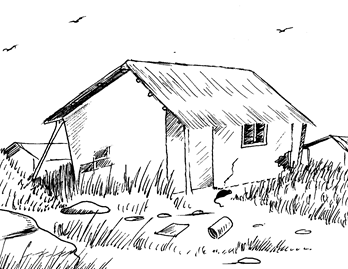
A child crawling towards boiling water
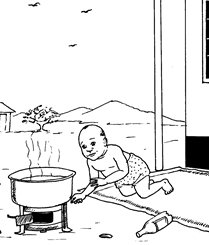
Ways of Preventing Accidents at Home and School
Outline ways of preventing accidents at home and school
Exercise 2
What do you understand by the term accident?
Answer the below
- Mention common accidents that can happen at home and school
- State the ways of preventing accidents
- How can you maintain peace and safety at home and school?
Ways of Maintain Safety at Home and School
Explain ways of maintain safety at home and school
Ways of preventing accidents at home and school include the following:
- Medicines and potential poisonous chemicals should be kept out of reach of children.
- Children should be monitored closely when playing.
- Sharp objects like broken bottles, razor blades and laboratory equipments should be well disposed of.
- Laboratory chemicals should be labelled and if possible appropriate warning signs should be indicated.
- One should not take medicine unless prescribed by the doctor.
- Bushes and tall grasses around the house should be cut to avoid harbouring snakes, bees and other dangerous animals.
- Students should observe and adhere to laboratory rules.
- Walls and trees that are at a risk of falling should be dismantled or cut down respectively.
- Flammable substances should be properly kept.
- Pits dug around the house should be buried. Pools should be drained if possible and all water storage containers should be properly covered.
- Avoid using charcoal to warm oneself during night when sleeping as continued inhalation of carbon monoxide from the charcoal may lead to death
- Burning candles should be put off when sleeping.
- Players should adhere to game rules.
- Laboratory doors should open outwards for easy exit in case of fire. Emergence door is also necessary for this case.
- Equipment like hoes, axes and knives should be properly kept
- Turn off all the gas taps after experiment.
Ways of maintaining peace and safety at home and school
- Avoid risk behaviours such as playing near deep ponds, playing with knives, alcoholism etc.
- Dangerous things such as drugs should be kept away from children’s reach
- Report any dangerous event that someone engages in.
- Be positive and supportive to each other.
- Social problems occurring at home or school should be solved keenly.
- One should be good to him/herself.
- Parents should give their children education on how to live and interact with others.
TOPIC 3: CELL STRUCTURE AND ORGANIZATION
The Concept of Cell
The Meaning of the Cell
Explain the meaning of the cell
Plants
and animals are made up of units called cells. The cells are
microscopic in such a way that they cannot be seen by our naked eyes.
Some organisms like protozoa, diatoms and bacteria consist of one cell
and are called single-celled or unicellular organisms. Some are made up
of many cells and are called multicellular organisms.
The
cell structure of living things was first seen by Robert Hooke in 1667
when he examined fine slices of cork. Robert Hooke believed that the
cells were empty and that the cell wall and cell membrane were the most
important parts of the cell but now cell contents are seen to be the
most important ones. Therefore a cell can be defined as the smallest unit of living things or a cell is a basic unit of life.
The Characteristics of the Cell
Mention the characteristics of the cell
Characteristics of the cell include the following:
- Cells are small microscopic structures which cannot be seen by our naked eyes.
- Cells are capable of dividing by mitotic process or meiotic process.
- Cells contain structures called organelles.
The cell theory
- A cell is a basic unit of structure and function in living organisms.
- New cells only come from pre-existing ones.
- Cells contain structures called organelles.
The
cell theories were proposed jointly by two scientists namely Schleiden,
a Belgian botanist, in 1838 and Schwann, German Zoologist, in 1839
Difference Between Various Types of Cells
Differentiate various types of cells
PROKARYOTIC AND EUKARYOTIC CELLS
Prokaryotic cells
are cells with no membrane-bound nucleus. The DNA lies free in the
cytoplasm in a region known as nucleoid. They have no true nuclei.
Examples of prokaryotic organisms are bacteria.
Eukaryotic cells are
cells whose nuclei are bounded by nuclear membrane. They are surrounded
by two nuclear membranes called nuclear envelope. Examples of
eukaryotic organisms are protoctists, fungi, plants and animal cells.
Differences between cell wall and cell membrane
| Cell wall | Cell membrane |
| It is a non–living structure | It is a living structure |
| It is made up of cellulose | It is made up of lipoprotein |
| It is freely permeable | It is selectively permeable |
Different between prokaryotic and Eukaryotic cells
| Eukaryotic cells | Prokaryotic cell |
| They have nuclear membrane | Lack nuclear membrane |
| Organelles are surrounded by envelopes | Organelles are not surrounded by envelopes |
| Have true nucleus | Have no true nucleus |
The Functions of Different Parts of Plant and Animal Cells
Explain the functions of different parts of plant and animal cells
Basically a cell has three main parts
- Cell membrane
- Cytoplasm
- Nucleus
Cell membrane (plasmalemma)
This is a thin flexible membrane made of protein and oil. It has the following functions:
- The cell membrane encloses the contents of the cell.
- It is freely permeable to water and gases only and selectively permeable to other molecules e.g. it allows food in but keeps unwanted molecules out. Thus cell the membrane controls the substances entering and leaving the cell.
Cytoplasm
Cytoplasm
is a transparent jelly-like fluid and may contain particles such
chloroplasts or starch grains or oil droplets. It contains up to 80%
water and the remainder is mainly protein. It is a place where chemical
reactions take place
Nucleus
A
nucleus is a ball-shaped or oval body located inside the cytoplasm. It
cannot usually be seen unless the cell has been stained with certain
dyes. It consists of nucleoplasm bounded by nuclear membrane. The
nucleus is a cell control centre.
The following are the functions of the nucleus:
- It controls the formation and development of a cell.
- The nucleus also controls chemicals which the cell manufactures.
- The nucleus contain chromosomes which carry genetic material i.e. DNA which is responsible for controlling genetic information.
Cell wall
The
cell wall is only found in plant cells. It is made up of cellulose.
When the cell is growing the cell wall is fairy plastic and extensible.
It becomes tough and resists stretching when the cell has reached full
size. The cell wall is non-living. It has the following functions:
- It gives the cell its shape.
- It is freely permeable to all kinds of molecules.
- It supports and protects the cell.
- It supports non-woody plant organs, such as leaves, by turgor pressure.
- It osmoregulates by resisting entry of excess water into cell.
Vacuole
In
animal cells, vacuoles are small droplets of fluid in the cytoplasm
variable in size and position. In plant cells, the vacuole is a large,
permanent fluid-filled cavity which occupies a greater part of the cell.
In plants, the fluid is called cell sap. The cell sap may contain salts, sugar and pigments dissolved in water.
The vacuole performs the following functions:
- It is responsible for food storage and osmoregulation.
- The outward pressure of the vacuole on the cell wall makes the plant cells firm, giving strength and resilience to the tissues.
Mitochondria
Mitochondria
are found in all aerobic eukaryotic cells. A mitochondrion is
surrounded by an envelope of two membranes, the inner being folded to
form cristae (singular: crista) It contains a matrix with a few ribosomes, a circular DNA molecule and phosphate granules.
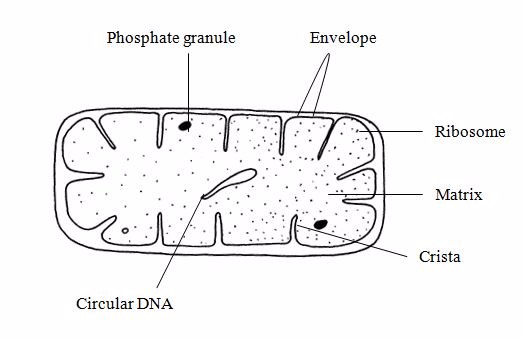
Mitochondrion
A
mitochondrion is a power house of a cell. It contains respiratory
enzymes involved in respiration. It absorbs oxygen and glucose. The
glucose is broken down to CO2 and H2O. Energy is released from glucose bonds to form ATPs (for use in other vital functions e.g. growth, movement, etc.
Chloroplast
Chloroplasts
are disc-shaped organelles. They are found in plant cells and algae
cells. A chloroplast contains a green substance called chlorophyll. It
is surrounded by an envelope of two membranes and contains gel-like
stroma through which runs a system of membranes that are stacked in
places to form grana.
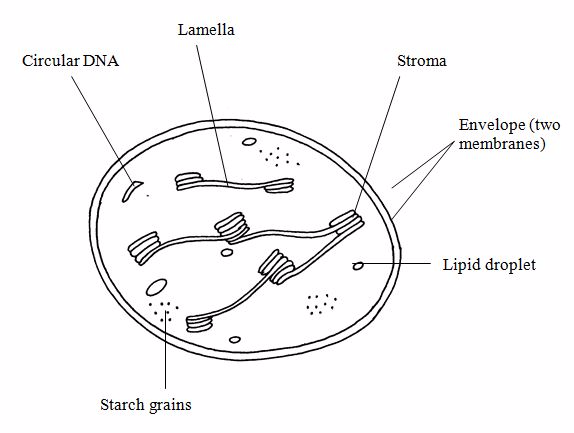
Chloroplast
Chloroplast
is an organelle in which photosynthesis takes place, producing sugars
from carbon dioxide and water using light energy trapped by chlorophyll.
Golgi body
Golgi bodies are stacks of flattened, membrane-bound sacs
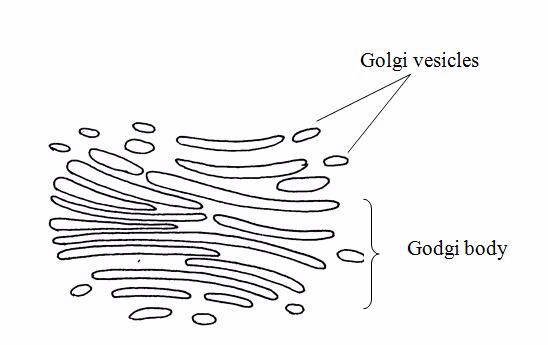
Golgi bodies have the following functions:
- Golgi bodies are responsible for internal processing and transport system.
- Processing of many cell materials e.g. protein takes place in the cisternae.
- Godgi vesicles transport the materials to the other parts of the cell
Plant and Animal Cell
Draw and label plant and animal cell
Animal cell
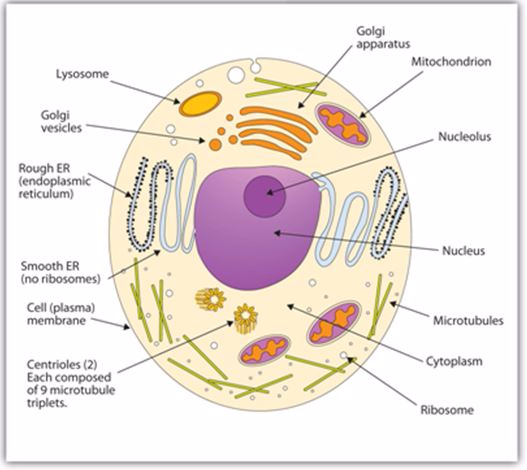
Plant cell
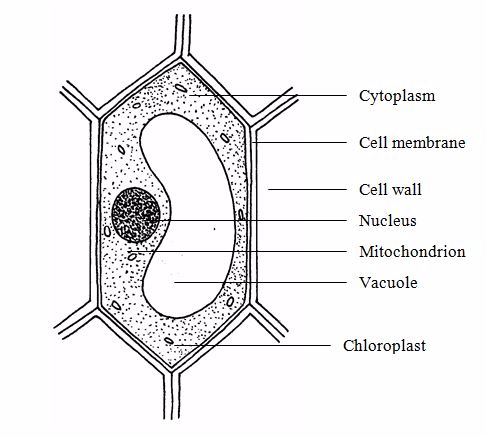
Similarities and Differences of Plant and Animal Cells
Outline similarities and differences of plant and animal cells
Differences between plant cell and animal cells
| PLANT CELL | ANIMAL CELL |
| (i) Have definite shape | Have no definite shape |
| (ii) Have chloroplasts | Have no chloroplasts |
| (iii)Have large permanent vacuoles | Have small temporary vacuoles |
| (iv) Centrioles usually absent | Centrioles present |
| (v) Have cell wall made of cellulose | Have no cell wall |
| (vi) The nucleus is located at the periphery | The nucleus is centrally located |
Similarities between animal cell and plant cells
- Both have cell membranes
- Both contain cytoplasm
- Both have nucleus
- Both have mitochondria
- Both have golgi bodies
- Both have ribosomes
Cell Differentiation
The Concept of Cell Differentiation
Explain the concept of cell differentiation
When most cells have finished dividing they become specialized. This means that:
- They do one particular job
- They develop a distinct shape
- Special kinds of chemical change take place in their cytoplasm
The
changes in shape and chemical reactions enable the cell to carry out
its special function. The process by which cells are specialized to
perform a particular function is called cell differentiation or ‘division of labour’
within the organism. Similarly, the special functions of mitochondria,
ribosomes and other cell organelles may be termed as division of labour
within the cell.
The Importance of Cell Differentiation and Formation of Tissues, Organs and Body Systems
Outline the importance of cell differentiation and formation of tissues, organs and body systems
Humans have many different types ofcellswith different jobs, such as bloodcellsthat carry oxygen and nervecellsthat transmit signals to all parts of the body.Cell differentiationis the process by whichcellsbecome specialized in order to perform different functions.
Even
multicellular organisms begin as just a single cell. Getting from one
single cell to billions of specialized cells that perform different
functions is a process that happens with the regulation of DNA and RNA.
It can also be influenced by factors in the environment.
Cell
differentiation holds a lot of importance for two basic reasons.
Firstly, it helps to identify stem cells, which could be used in the
future to deal with conditions that require transplant and form the
basis of embryonic stem cell research. Also, in cytopathology, the level
of cellular differentiation is used as a measure of cancer progression,
where the term 'grade' is used as a marker to determine how
differentiated a cell in a tumor is. Thus, the importance of this
process cannot be underestimated as it could hold the key to future
treatments for fatal diseases.
Difference between Cells, Tissues Organs and Body Systems
Differentiate cells, tissues organs and body systems
Animal cells
Nerve cells
These
are specialized for conducting impulses of an electrical nature along
the fibre. The fibre may be very long e.g. from the foot to the spinal
column. They are the longest cells known.
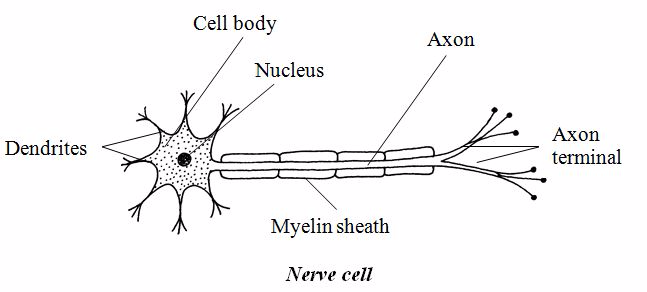
Nerve cell
Blood cells
- White blood cells:These cells occur in blood stream and are specialized for engulfing harmful bacteria. They are able to change their shapes and move about, even through the walls of blood vessels into the surrounding tissue.
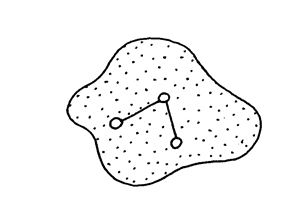
White blood cell
- Red blood cells:These cells are responsible for transportation of oxygen from the lungs to all parts of the body.
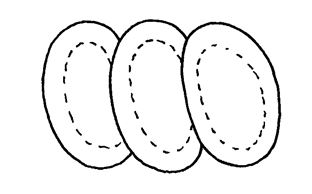
Red blood cells
- Platelet cells: Platelet cells are found in the blood. They are also called blood platelets. Their function is to help clot the blood at wounds and so stop bleeding.
Reproductive cells
- Sperm cell: it is a male gamete produced in the testes.

Sperm cell
- Egg cell:It is a female gamete produced in the ovary.
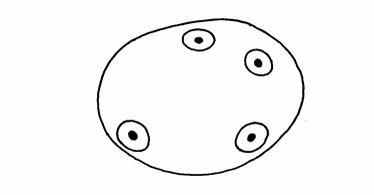
Egg cell
Muscle cells
These
are elongated cells which form the muscle tissues. Muscle cells are
highly specialized in that they are able to shorten a half or even a
third of their resting lengths. This characteristic enables the muscles
to contract and expand.

Muscle cell
Ciliated cells
These cells form the lining of the nose and wind pipe.
Plant cells
Root hair cells
These
cells form the outer layer of young roots. The cells are specialized to
absorb water and mineral slats from the soil. The hair-like projections
penetrate the soil particles and offer a large absorbing surface.
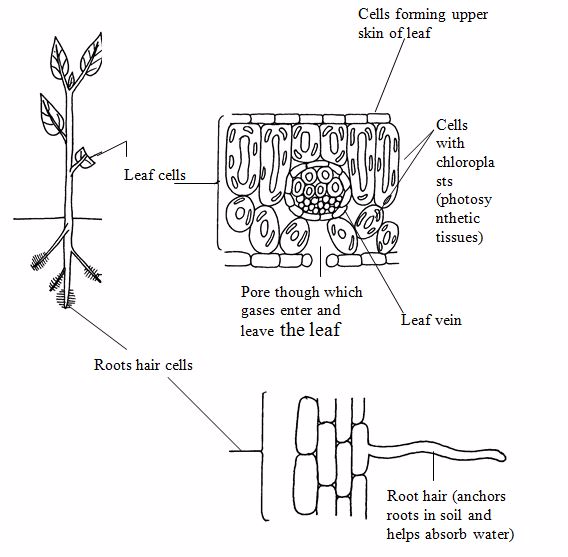
Phloem cells
These
are food conducting cells in a plant, joined end to end, and where they
meet, perforations occur in the walls. Through these holes, the
cytoplasm of one cell communicates with the next.
Xylem cells
The
cells conduct water and mineral salts form the soil to all parts of the
plant. They are also responsible for mechanical support.
- Parenchyma cells
- Collenchyma cells
- Sclerenchyma cells
- Epidermal cells
TISSUES
A tissue is a group or collection of similar cells performing a specific function. Tissues vary in size, shape and function.
Examples of tissues
Animal tissues
Animal tissues include epithelial tissue, muscle tissue, nervous tissue, blood tissue and bony tissue.
Epithelial tissue:Epithelial
tissues cover the body lining cavities, hollow organs and tubes. They
are responsible for(i) protection of the underlying structure from
dehydration, and chemical and mechanical damages;(ii) secretion;
and(iii) absorption.
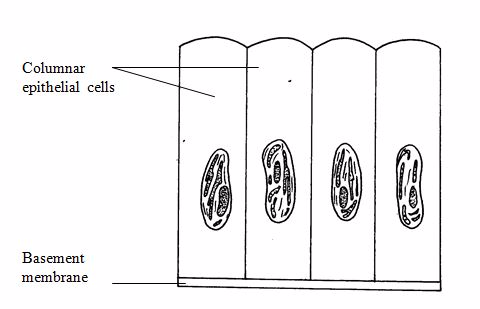
Columnar epithelium
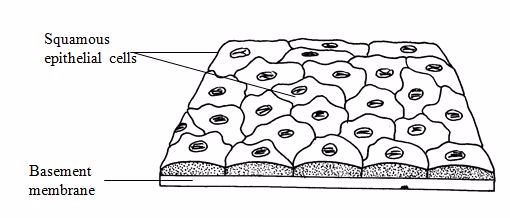
Squamous epithelium
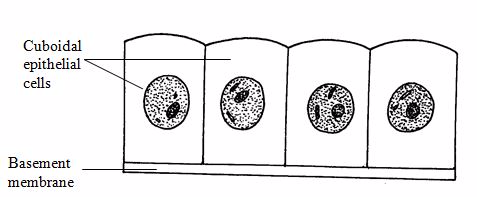
Cuboidal epithelium
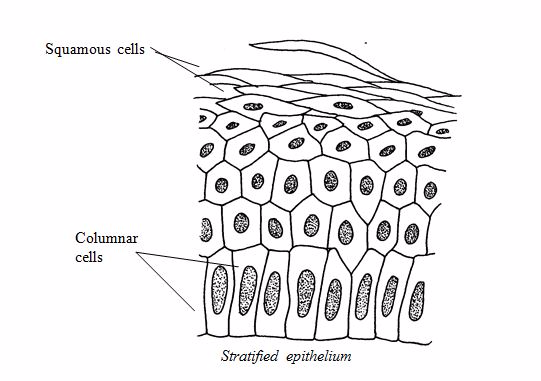
Stratified epithelium
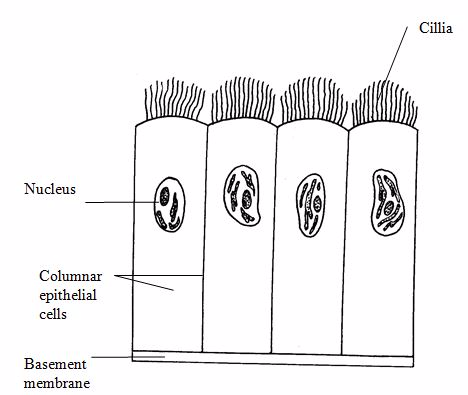
Cliated columnar
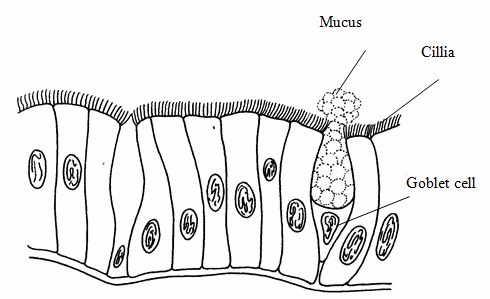
Cilliated columnar epithelium with goblet cells
Muscle tissue
Muscle tissue consists of cells specialized to contract and move the body. Muscle tissues can be:
- skeletal muscle tissue;
- smooth muscle tissue; or
- cardiac muscle tissue.
Skeletal muscle tissues form those muscles that move the bones
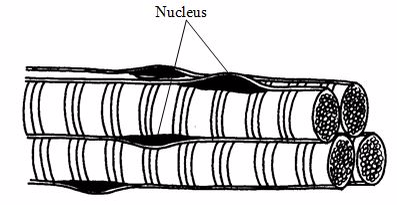
Skeletal muscle fibres
Smooth muscle tissues
These are found in the walls of hollow organs. They perform the following functions:
- Regulate the diameter of blood vessels and parts of the respiratory tract.
- Propel the contents of the ureters, ducts of glands and alimentary tract.
- Expel contents of the urinary bladder and uterus.
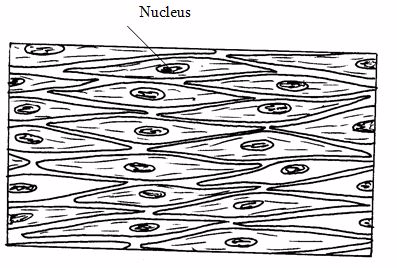
Smooth muscle fibres
Cardiac muscle tissue
This
kind of muscle tissue is found only in the heart wall. It helps in
contracting and relaxing of heart muscles thus pumping the blood to
various body parts.

Cardiac muscle fibres
Nervous tissues
Nervous
tissues have endings that detect changes in the environment. They
transmit and conduct nerve impulses to the brain and spinal cord and to
the effector organs.
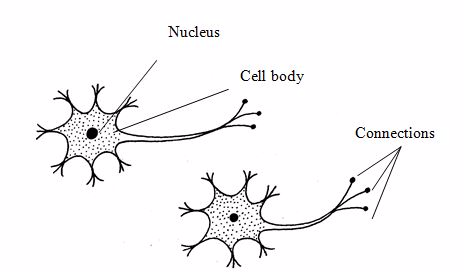
Plant tissues
Examples
of plant tissues are collenchyma tissue, sclerenchyma tissue, epidermal
tissue, conducting tissues e.g. phloem and xylem, palisade tissue and
spongy tissue.
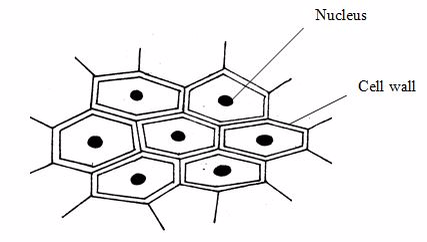
An onion epidermal tissue
ORGANS
An organ is a collection of tissues working together to perform a certain function
Animal organs
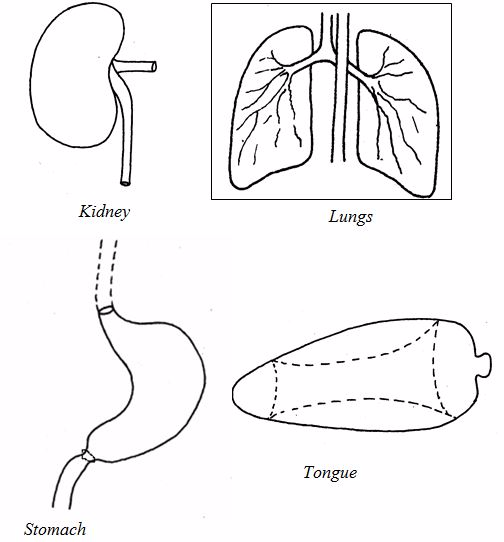
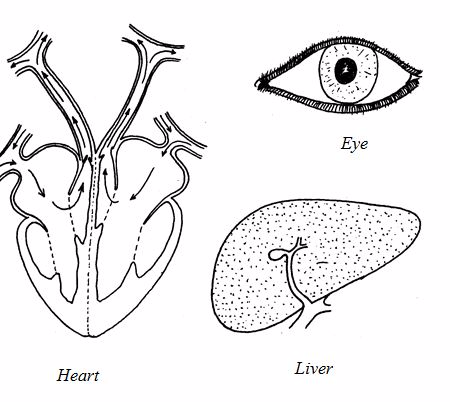
Other examples of animal organs include skin, testes, ears, noses and the brain.
Plant organs
Examples of plant organs include leaves, stems, roots, flowers and fruits.
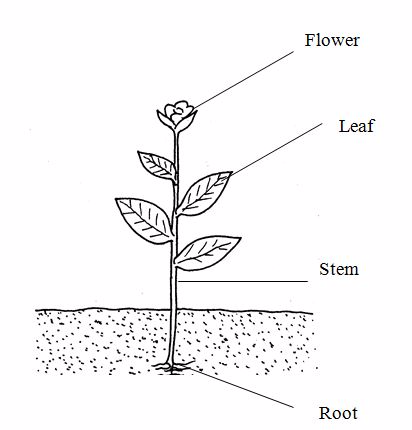
Plant organs
Organ system
A system refers to several inter-related organs performing a particular function.
Digestive system
The
main organs that make up the digestive system are alimentary canal,
liver and pancreas.The main function of this system is to digest and
absorb food.

The digestive system
Circulatory system
This
system consists of the heart, arteries and veins.The role of the
circulatory system is to transport gases, food, hormones and distribute
heat.
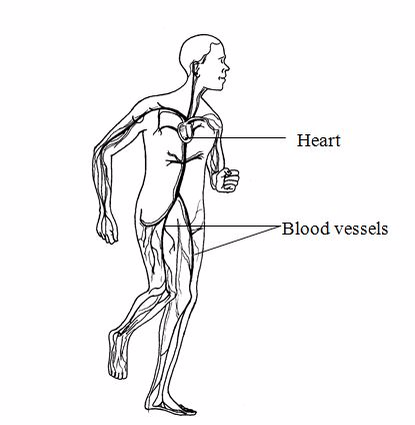
The circulatory system
Lymphatic system
Lymphatic
system has comprises of the lymph vessels and lymph nodes. The main
function of the lymphatic system is to transport materials and protect
against.
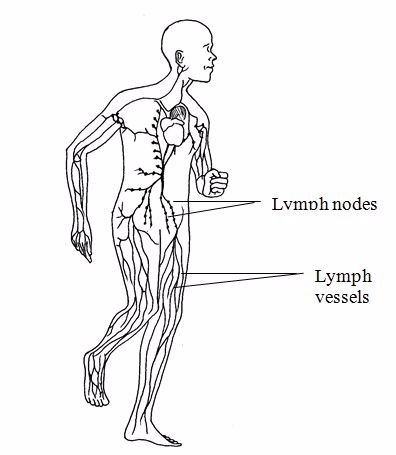
Lymphatic system
Respiratory system
The
respiratory system consists of the trachea and the lungs. The role of
the respiratory system is to take in oxygen and expel carbon dioxide
gas.

The respiratory system
The urinary system
The
main organs of the urinary system are kidneys, ureter, bladder and
urethra.The urinary system plays a role in removing metabolic waste
products from the body and also it is responsible for osmoregulation.

The urinary system
The nervous system
This system consists of the brain, spinal cord and nerves.The role of the nervous system is to detect and respond to stimuli.
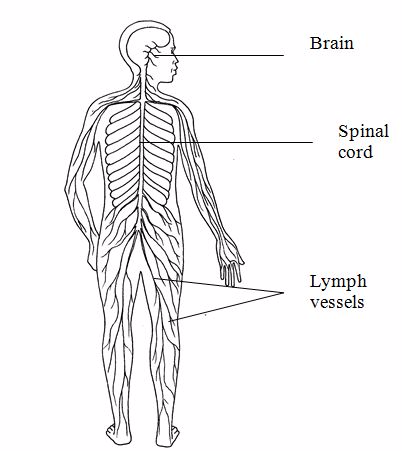
Muscular system
The muscular system
It consists of the organs muscles and tendons. The role of the muscular system is to bring about movement.
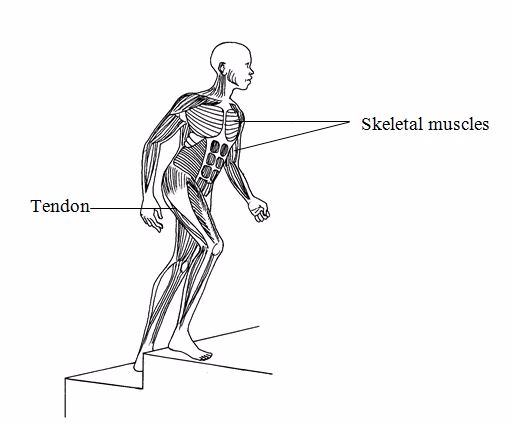
The skeletal muscles
The reproductive system
It consists of the ovaries, testes and uterus. Its role is to produce offspring.

Male reproductive system
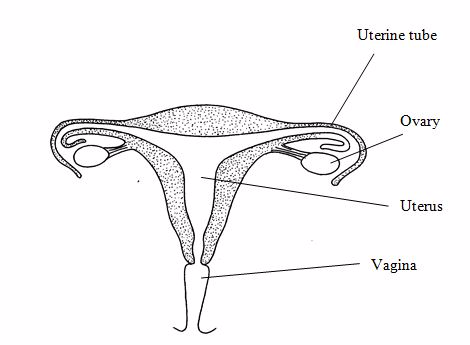
Female reproductive system
Endocrine system
It consists of endocrine glands. Its role is to produce hormones.
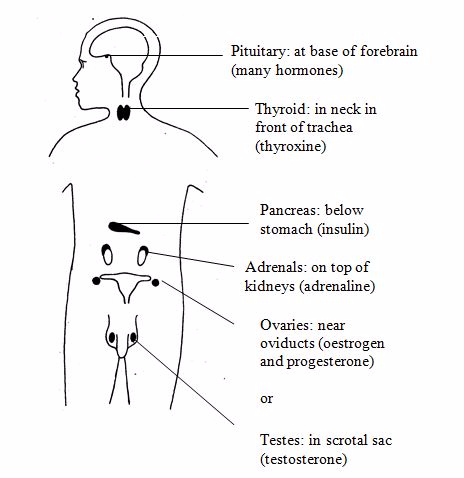
Endocrine system
Skeletal system
It consists of a system of skeletons. Its function is to support the body, protect internal organs and produce blood cells.

Skeletal system
Examples of organ system in plants
Root system –consists of roots
Function:
- Holds the plant firmly into the soil
- Absorption of water and mineral salts from the soil
- Sometimes they act as storage organs in some plants
Shoot system – consists of the organs flowers, fruits, stem and leaves
Function
- Site of reproduction
- Transport of substances
- Photosynthesis occurs in the shoot
- Transpiration processes.
TOPIC 4: CLASSIFICATION OF LIVING THINGS
Concept of Classification
The Concept of Classification
Explain the concept of classification
Have
you ever visited a library? How are the books arrangedand kept? Are
they arranged randomly or systematically? Obviously the books are
arranged systematically in the shelves. Science books are kept
separately in their respective shelves. Science books are kept
separately from social or commercial books. Biology books are separated
from physics books or chemistry books. Likewise, in the shop, laboratory
or pharmacy items are sorted and placed on the basis of their
similarities.
In
the world, there are numerous varieties of living organisms.These
organisms do vary in size, structure, shape, habitat, modeof feeding and
even mode of reproduction. The organisms can be sorted out and placed
into different groups based on their similarities. The system of sorting
out and placing organisms into different groups on the basis of their
similarities and differences is called classification.
Living Things According to Their Similarities and Differences
Group living things according to their similarities and differences
Activity 1
Study
the external features of the following organisms:Lizard, sugar cane
plant, maize plant, shark, Tilapia, cactusplant, bat, cockroach,
butterfly, hen, goat, toad, frog, spider andorange plant
Activity 2
- Sort out the above organisms into plants and animals
- Classify the animals on the following basis
- Those with wings and those without wings
- Those with tails and those without tails
- Those with antennae and those without antennae
- Terrestrial and aquatic organisms
The Importance of Classifying Living Things
Explain the importance of classifying living things
The following are importances of classification
- Classification makes the study of living things easy
- Classification makes communication easy among biologists from different parts of the world
- It provides good organized system in which a newly identified organism can be easily fitted in future.
- It makes it easier to identify organisms
- It can be used to predict characteristics that are present in the members of the same group.
Classification Systems
Types of Classification Systems and Their Differences
Outline types of classification systems and their differences
There are two types of classification
- Artificial classification
- Natural classification
Artificial
classificationAn artificial classification is based on one or a few
easilyobservable characteristics and usually designed for
practicalpurpose with an emphasis on convenience and simplicity. In
thistype of classification, unrelated organisms are often placed inthe
same group while closely related organisms are often placedin different
groups.Linnaeus included all
Linnaeus
included all worm-like organisms in a single group,the vermes. This
included wide a range of animals as fromnematodes, earthworms to snakes.
This was an artificialclassification since it did not consider natural
relationships suchas the fact that snakes have backbones and earthworms
do nothave. Thus, snakes have more features in common withvertebrates
than with worms.
Bats
and birds would be placed in the same group because allhave the ability
to fly since they posses wings. But bats sharemany features with
mammals. They have features like hair,mammary glands, sweat glands and
different types of teethwhich are characteristics of mammals. Therefore,
bats are morerelated to mammals than birds.Natural
Natural
system of classificationThis type of classification system tries to use
natural relationshipsbetween organisms. It considers many features in
commonincluding internal as well as external features.Similarity of
embryology, morphology, anatomy, biochemistrycell, structure and
behaviour are all considered relevant. It isbased on evolutionary
relationship in which organismsbelonging to the same group are believed
to have a commonancestor.
Characteristic
features which show homology are distinguishedfrom those which show
analogy. Example the fore limbs ofmammals, whales, birds and bats have
the same basic patternand similar bone arrangement, i.e. homologous.
This suggeststhat these organisms are coming from the same ancestor and
thatcan be placed in the same group.
The
wings of birds and grasshoppers are analogous. The wingsof birds have
internal skeletons while the wings of grasshoppersdo not have bones but
they perform similar function. Theseorganisms cannot be placed in the
same group since they aredifferent in many ways.
Merits and Demerits of Each Type of Classification System
Explain merits and demerits of each type of classification system
Advantages of artificial system of classification
- It is easy to classify organisms since it is based on few observable characteristics.
- It does not take much time to classify organisms based on this system (not time consuming).
- It does not need expertise (even a layman can do).
- It is relatively stable i.e. not easily changing from time to time.
Disadvantages of artificial system of classification
- It tends to place closely related organisms into different groups instead of being grouped together e.g. a bat can be placed in a group of birds instead of mammals.
- Different or unrelated organisms may be placed in the same group e.g. bats placed in a group of birds, worms placed with snakes in the same group
- The system does not provide enough information about its members.
- It is difficult to incorporate additional information.
Advantages of natural system of classification
- Closely related organisms are placed in the same group.
- It reflects evolutionary relationships.
- Unrelated organisms cannot be placed in the same group.
- It makes it easy to incorporate additional information.
Disadvantages of natural system of classification
- It is difficult since it considers many features.
- It requires expertise i.e. more knowledge about an organism.
- It is time consuming.
- It is relatively unstable i.e. it changes from time to time.
- It is more expensive since more data are required.
Differences between natural classification and artificial classification
| Artificial classification | Natural classification |
| (i) Considers few features in common | Considers many features in common |
| (ii) Does not reflect on evolutionary relationships | Reflects on evolutionary relationships |
| (iii) It is easy to classify | It is difficult to classify |
| (iv) Not time consuming | It is time consuming |
| (v) Does not require expertise | Requires expertise |
| (vi) New information cannot be added | New information can be added. |
Practical Activities of Classifying Living Things According to Artificial and Natural Classification Systems
Carry out practical activities of classifying living things according to artificial and natural classification systems
Activity 3
Collect
the under named organisms and keenly examine their external and
internal features:Bat, grasshopper, rat, earthworm, fish, ascaris,
cockroach, lizard, hen, hawk, and toad.
Activity 4
Classify the organisms using artificial classification system.
Activity 5
Classify the organisms using natural classification systems.
Major Groups of Living Things
Major Groups of Living Things
Mention major groups of living things
The
major groups of living things are the kingdoms. Previously, living
things were categorized into two main groups; plantae and animalia
kingdom. But this classification caused difficulties since some
organisms seemed to posses some of the characteristics of both groups.
For example, euglena is capable of feeding like an animal and locomote
like an animal. Therefore, it is placed in animalia kingdom. But the
same euglena has chlorophyll and it is capable of manufacturing its own
food. Therefore, it should also be placed in plantae kingdom. Such an
organism does not seem to fit exactly in animalia or plantae kingdom.
Thus, euglenas are assigned in the major group of their own.
Currently, there are five major groups (kingdoms) of living things.
- Kingdom monera
- Kingdom protoctista
- Kingdom fungi
- Kingdom plantae
- Kingdom animalia
Ranks of Classification
Outline ranks of classification
In
the millions of organisms found on earth some are more similar while
others are less similar. For example, all human beings resemble each
other more closely than they resemble with the chimpanzees. Humans have
more resemblance with chimpanzee than cats and dogs, and more like dogs
than birds.Therefore when classifying the organisms, groups are
established which are called ranks or taxa.
There are seven ranks of classification
- Kingdom
- Phylum/division
- Class
- Order
- Family
- Genus
- Species
The highest rank of classification is the kingdom. The lowest rank of classification is the species. Every known organism has particular place in each group.
- Kingdom- this is the highest rank (taxon). It comprises of several related taxa. It comprises of many organisms than any other taxon.
- Phylum/division– this is the second largest rank of classification. It consists of several closely related classes.
- Class - members or this group have more characteristics in common than do members of division or phylum.
- Order- it consists of groups that are more alike than those in a class.
- Family –this is made up of groups that are more alike than those in the order. Wolves and cats are both in the order Carnivore but wolves are in the family Canidae while cats belong to the family Felidae.
- Genus – it consists of very similar species but members of different species cannot breed one another.
- Species – Species can be defined as a group of closely related organisms which are capable of interbreeding and produce fertile offspring.
It
is the basic unit of scientific classification. Organisms that need to
be placed in the same species must have the following characteristics:
- Must have many features in common.
- Must be able to breed one another to produce fertile offspring.
- Must be distinct and different from other organisms.
N.B: The term division is used by botanists instead of phylum when classifying plants or organisms related to plants.
Classification of some members of animals
| Human | Leopard | Domestic cat | |
| Kingdom | Animalia | Animalia | Animalia |
| Phylum | Chordata | Chordata | Chordata |
| Class | Mammalia | Mammalia | Mammalia |
| Order | Primates | Carnivore | Carnivore |
| Family | Hominidae | Felidae | Felidae |
| Genus | Homo | Panthera | Felis |
| Species | sapiens | padus | catus |
Scientific naming of living organisms
The
scientific process of naming organisms is called nomen- clature.
Biological nomenclature is based on the binomial system (double naming
system) pioneered by the work of a Swedish naturalist Carl Linnaeus
(1707-1778).
Biologists
assign scientific names to organisms so as to avoid confusion among
themselves since scientists from different countries use different
languages. The scientific names are uniform in all languages.
Latin
language is used in assigning the scientific name because it is an
official language and that this language is no longer subject to
changes; it is considered to be a dead language hence names once given
remain unchanged.
Rules of binomial nomenclature
- Scientific names of organisms must be in Latin language and if the names are derived from other languages, they must be latinized.
- A scientific name of an organism has two parts, genus name and species name.
- A genus name always starts with a capital letter and a species name follows with a small letter.
- In typed scripts, a scientific name must be written in italics or underlined if hand written.
- A specific name is sometimes accompanied with the name of the author who first described and named the organism.
- When an organism is known by several names, the valid name is the one which was established after the work of Linnaeus.
Example 1
Examples of scientific names
Human being:Homo sapiens
Homo is the generic name and sapiens is the specific name.
Other examples of organisms with their scientific names
| Common name | Scientific name | |
| Earthworm | Lumbricus | terrestris |
| Cockroach | Periplaneta | americana |
| Amoeba | Amoeba | proteus |
| Coffee | Coffea | arabica |
| Maize | Zea | mays |
| Bean | Phaseolus | vulgaris |
| Domestic cat | Felis | catus |
| Sisal | Agave | sisalana |
| Ashok tree | Polyanthia | longifolia |
| Housefly | Musca | domestica |
| Neem tree | Azadirachta | indica |
| Flamboyant (Christmas tree) | Delonix | regia |
| Tropical almond (mkungu) | Terminalia | catapa |
Practical Activities of Grouping Organisms into their Respective Major Groups
Carryout practical activities of grouping organisms into their respective major groups
Activity 6
Group Organisms into their Respective Major Groups
Viruses
Viruses
were discovered by a Russian botanist D. I. Ivanovsky and a Dutchman
Beijerink.In 1852 Ivanovsky prepared an infectious extract from tobacco
plants that were suffering from mosaic disease. When the extract was
passed through a filter able to prevent the passage of bacteria, the
filtered fluid was still infectious. 1898 Beijerink gave the name
“virus” (in latin means, “poison”) to describe the infectious nature of
certain filtered plant fluids.
General and Distinctive Features of Viruses
Explain general and distinctive features of viruses
Characteristics of Viruses
- They are the smallest living organisms ranging from 20-30nm. On average, they are about 50times smaller than bacteria.
- Viruses do not have cellular structures, which mean that they lack certain important organelles like nucleus, cytoplasm, golgi bodies, etc.
- They can only reproduce inside the living cells hence they are parasitic.
- They have a simple structure consisting of either DNA or RNA but not both, surrounded by a protein or lipoprotein coat.
- They can be described as living or non-living.
- They are highly specific to their hosts i.e. each virus recognizes only certain types of cells.
- Viruses are capable of replicating themselves only when they are inside the host cell.
Viruses as living things
- They possess genetic material (RNA or DNA).
- They reproduce when they are in the host cell (replication).
- They are capable of identifying their hosts and attack them.
- They can undergo mutation (they mutate) i.e. they undergo different changes in shape.
- Like other parasites, they are specific to host.
Viruses as non-living things
- They can crystallize outside the host.
- They are metabolically inert in isolation.
- They are non-cellular i.e. they lack cell organelles.
- They do not perform necessary life processes such as respiration, excretion nutrition etc.
The Structure of Viruses
Describe the structure of viruses
Generally viruses have a very simple structure consisting of the following:
- RNA or DNA which may be single stranded or double stranded. They form a structure called core.
- A protective coat of protein surrounding the core called capsid.
- A nucleocapsid which is a combined structure of core and capsid.
- Envelope – an additional layer of lipoprotein layer around the capsid.
- Capsids are made up of identical repeating units known as capsomeres.
Bacteriophage
Bacteriophage is a virus that attacks and kills bacteria. Some of them have head with a tail sheath.
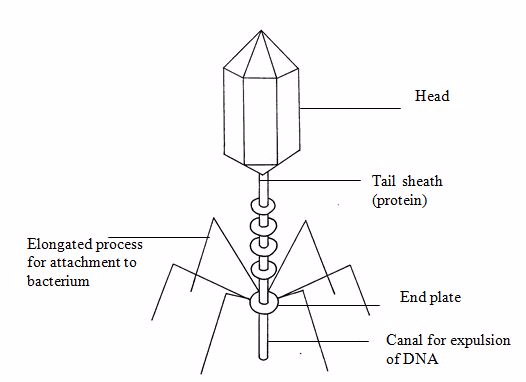
Bacteriophage
Advantages and Disadvantages of Viruses
Outline advantages and disadvantages of viruses
Advantages of viruses
- Viruses are used in developing vaccines, for example, vaccines for measles, polio and rubella are made from viruses that have been attenuated (weakened).
- Viruses are used as biological weapons to kill organisms.
- They are used as vectors in genetic engineering to transfer genes from one organism to another for improving or treating the defective genes.
- Bacteriophages are viruses that attack bacteria and hence they help in controlling infections and diseases.
- Viruses are used as biological weapons in wars and in biological pest control.
Disadvantages of viruses
- Most viruses cause diseases to both plants and animals. Plant disease such tomato mosaic, cassava mosaic and tobacco mosaic; and animal diseases e.g. measles, small pox, poliomyelitis and yellow fever are caused by viruses.
Kingdom Monera
This
kingdom is made up of organisms known as bacteria (singular:
bacterium). They are the most ancient and smallest organisms with a
cellular structure. They are mainly single celled. Bacteria occupy many
environments such as soil, dust, water and in the bodies of plants and
animals
Some
bacteria are found in hot springs where temperatures are 78ºC or more.
Others can withstand very low temperatures. Some are found in very deep
cracks in the ocean floor, at very high temperatures, about 360ºC
(extreme thermophiles).
General and Distinctive Features of the Kingdom Monera
Explain general and distinctive features of the kingdom monera
General characteristics of the kingdom monera
- They are mainly unicellular and very small.
- They are all prokaryotic (nucleus not bound by membrane)
- They reproduce by binary fission.
- Some members of the kingdom are autotrophs while others are heterotrophs
- They have cell wall made up of protein material and sometimes lipids.
- Some bacteria form spores during adverse conditions i.e. extreme conditions e.g. high or low temperatures, drought etc. The spores allow them to survive as they have very thick resistant walls.
- Some are aerobes while others are anaerobes.
- The genetic material (DNA) is scattered in the cytoplasm and they lack internal membrane bound organelles such as mitochondria, chloroplasts, golgi bodies etc.
Structures of the Representative Organisms of the Kingdom Monera
Describe structures of the representative organisms of the kingdom monera
General structure of the bacteria
- Bacteria have strong and rigid cell walls due to the presence of murein. The wall prevents the cell from bursting when it absorbs much water (as a result of osmosis).
- Bacterial cells are bounded by partially permeable membranes.
- Bacteria possess capsules which are slimy or gummy.They have flagella which aid motility of the bacteria. Motile bacteria can move in response to a certain stimulus i.e. tactic movement. Flagella can easily be seen by electron microscope.
- They have small self replicating circle of extra DNA called a plasmid.
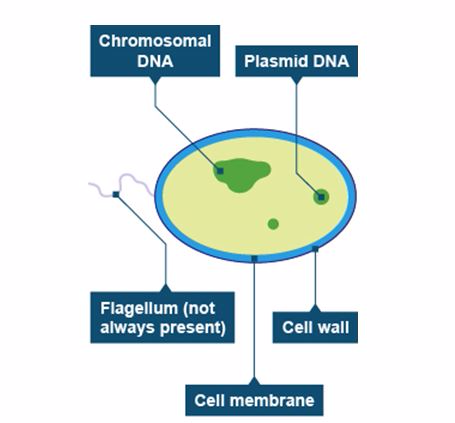
General structure of bacterium
Forms of bacteria
Bacterial shape is an important aid to classification. There are four main shapes
Coccus (plural: cocci)
They are spherical in shape and can be of the following types.
- Micrococcus – exist singly. They cause sore throat.
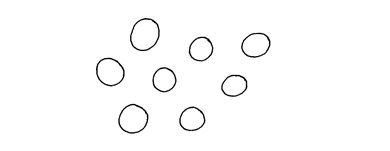
- Diplococci - this type of bacteria exist in pairs. The pneumococci (Diplococcus pneumoniae) are the only members. They cause pneumonia.

- Streptococci – this type of bacteria stick together and form a chain. Most of them infect upper respiratory surface and cause diseases e.g. sore throat.

- Staphylococci – These bacteria form a grape like bunch. They cause boils, pneumonia, food poisoning and other diseases.
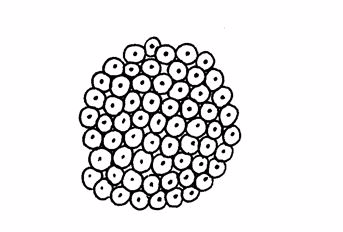
Bacilli (singular: bacillus)
These are rod shaped bacteria. They can be:
- Single rods, for example, Escherichia coli commonly living in the gut and Salmonella typhi which cause typhoid fever.
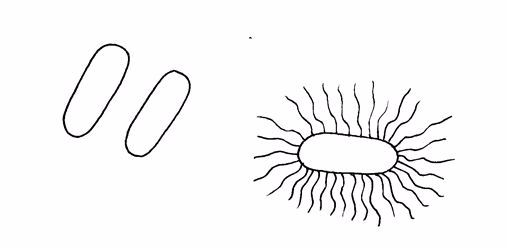
- Rods in chain, for example, Azotobacter, a nitrogen-fixing bacteria, and Bacillus anthracis which cause the disease anthrax.

- Bacilli with endospores showing various positions, shapes and sizes of spores. They can be:
- Central, not swollen e.g. Bacillus anthracis causes anthrax
- Spherical spore, terminal swollen e.g. Clostridium tetani causes tetanus
- Sub-terminal, swollen e.g. Clostridium botulism causes botulism.Spores may also be central
Spirilla (singular: spirillum)
These are spiral-shaped bacteria e.g. Treponema pallidum which causes syphilis
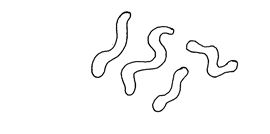
Sprrilla
Vibrio
These are comma shaped bacteria, for example Vibrio cholerae.
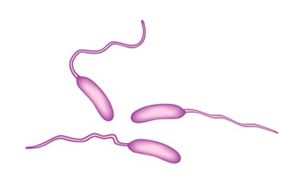
Vibrio cholerae
The Advantages and Disadvantages of the Kingdom Monera
Outline the advantages and disadvantages of the kingdom monera
Economic Importance of Bacteria
In Agriculture, the bacteria are mostly important for following reasons
- Nitrogen fixation:Plants cannot trap nitrogen from the atmosphere but bacteria can fix nitrogen and change it into nitrogenous compounds. The phenomenon is called nitrogen fixation. The bacteria, which fix atmospheric nitrogen, are called nitrogen-fixing bacteria. Some of the nitrogen fixing bacteria are found freely in soil are called free-living bacteria, eg. Clostridium and Azotobacter. Some of them are found in root nodules making association with leguminous plants called symbiotic bacteria, eg. Rhizobium.
- Nitrification:Some bacteria convert ammonium compounds into nitrates in the soil. The process is called nitrification. The bacteria that take part in this process are called nitrifying bacteria, eg. Nitrobacter and Nitrosomonas. Nitrosomonas NitrobacterAmmonia--------------->Nitrites------------->Nitrates
- Ammonification:Some bacteria utilize proteins of dead bodies and convert it into amino acids. These amino acids are converted into ammonia by some bacteria. The process is called ammonification and the bacteria involve in the process are called ammonifying bacteria. Then the ammonia reacts with CO2 and H2O and gives ammonium carbonate which is absorbed by plants.
- Bacteria decompose dead bodies. They convert complex organic compounds into simple inorganic compounds. Therefore they're called natural scavengers.
- Bacteria make the milk sour and produce flavor. They are responsible for coagulation of milk. E.g. Lacto bacillus.
- Bacteria convert sugary substances into alcohol, acids, acetones; etc the process is called fermentation.
- Bacteria also help to produce different types of enzymes like Amylase secreted from Bacillus, Protease from Bacillus, Streptokinase from Streptomyces.
- Bacteria are useful for vitamin production like Vitamin B (Cabalmin) is secreted from Pseudomonas, Vitamin B (Riboflavin) is secreted from Clostridium.
- They are important for antibiotic production like Terramycin from Streptomyces rimosus, Streptomycin from S. griseus, Neomycin from S. fradiae.
- They are also important to produce hydrogen commercially. During the process they ferment carbohydrate and hydrogen gas is produced.
- Bacteria decompose waste products.
Disadvantage of Bacteria
- Some of the species cause food poisoning. They secret some toxic chemical substances on out food stuff which cause food poisoning, eg Staphylococcus and Clostridium.
- Some are responsible for human diseases: Cholera: Vibrio cholera, Pneumonia: Staphylococcus pneumoniae, Diarrohea: Escherechia coli, Tuberclosis: Mycobacterium tuberclosis Leprosy: M. leprae, Meningitis: Nisseria meningitides.
- Some bacteria are responsible for plant diseases. Red stripe in sugarcane, Leaf streak in rice, black rot in cabbage and yellow rot in wheat are caused by Xanthomonas and Pseudomonas.
The Characteristics of Pathogenic and Non-pathogenic Bacteria
Outline the characteristics of pathogenic and non-pathogenic bacteria
Pathogenic bacteriaare bacteria that can cause infection. This article deals with human pathogenic bacteria.
Although
most bacteria are harmless or often beneficial, several are pathogenic.
One of the bacterial diseases with the highest disease burden is
tuberculosis, caused by the bacteriumMycobacterium tuberculosis,
which kills about 2 million people a year, mostly in sub-Saharan
Africa. Pathogenic bacteria contribute to other globally important
diseases, such as pneumonia, which can be caused by bacteria such asStreptococcusandPseudomonas, and foodborne illnesses, which can be caused by bacteria such asShigella,Campylobacter, andSalmonella.
Pathogenic bacteria also cause infections such as tetanus, typhoid
fever,diphtheria,syphilis, and leprosy. Pathogenic bacteria are also the
cause of high infant mortality rates in developing countries.
Nonpathogenic organismsare
those that do not cause disease, harm or death to another organism and
is usually used to describe bacteria.It describes a property of a
bacterium - its ability to cause disease. Most bacteria are
nonpathogenic. It can describe the presence of non-disease causing
bacteria that normally reside on the surface of vertebrates and
invertebrates as commensals. Some nonpathogenic microorganisms are
commensals on and inside the body of animals and are called microbiota.
Some of these same nonpathogenic microorganisms have the potential of
causing disease, or being pathogenic if they enter the body, multiply
and cause symptoms of infection.
Immunocomprised
individuals are especially vulnerable to bacteria that are typically
nonpathogenic but because of a compromised immune system, disease occurs
when these bacteria gain access to the body's interior. Genes have been
identified that predispose disease and infection with nonpathogenic
bacteria by a small number of persons.Nonpathogenic colistrains normally
found in the gastrointestinal tract have the ability to stimulate the
immune response in humans, though further studies are needed to
determine clinical applications.
Kingdom Protoctista
General and Distinctive Features of the Kingdom Protoctista
Explain general and distinctive features of the kingdom protoctista
This
Kingdom comprises of unicellular and simple multicellular organisms
whose cells have organized nucleus and membrane bound organelles. It
includes the algae and protozoa.
Algae
have chlorophyll hence make their own food through the process of
photosynthesis.Protozoa are heterotrophic taking in ready-made food.
Other
organisms, which are included in this Kingdom are red algae, Brown
algae, Amoeba, Euglena, plasmodium, trypanosome and paramecium.
General features of Kingdom Protoctista
- Some are autotrophs, for example Euglena while others are multicellular.
- They are all eukaryotes with most of them having locomotery structure.
- Most of them live in moist places or in water.
Distinctive features
- Most are unicellular eukaryotes
- They reproduce by binary fission
Phyla of the Kingdom Protoctista
Mention phyla of the kingdom protoctista
The phyla of kingdom protoctists include the following:
- Euglenophyta e.g. Euglena
- Rhizopodia e.g. Amoeba
- Zoomastigma e.g. Trypanosoma
- Apicomplexa e.g. Plasmodium
- Oomycota e.g. White root
- Chlorophyta e.g. Spyrogyra
- Cilliaphora e.g. Paramecium
- Rhodophyta e.g. Red algae
Structure of Amoeba and Paramecium
Describe structure of amoeba and paramecium
Amoeba belong to phylum Rhizopoda, organisms with the following extra features:
- They are eukaryotes
- Unicellular
- Parasitic
- They move using pseudopodia
Pseudopodia are projection of the cytoplasm that extend and pull the amoeba forward or engulf food particles.
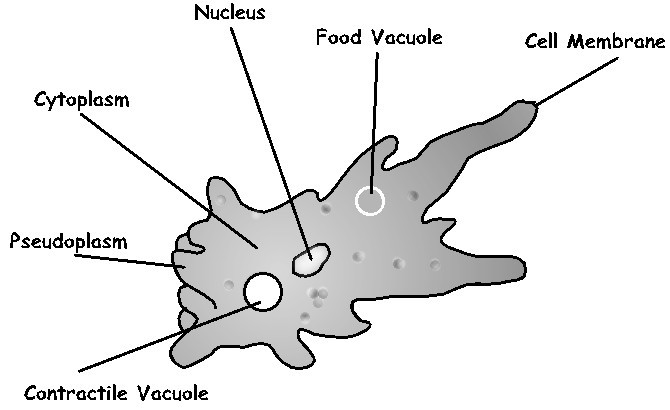
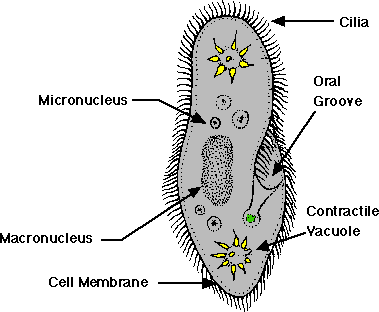
The Advantages and Disadvantages of Amoeba, Euglena Paramecium and Plasmodiu
Explain the advantages and disadvantages of amoeba, euglena paramecium and plasmodium
Advantages of Paramecium:Are eaten by small water animals
Disadvantages of Paramecium:Causes diseases of bulanterdium eoli destroying the lining of intestines
Osmoregulation:Paramecium
has two contractile vacuoles and each is associated with permanent
system of collecting channels, which empty, into the main vacuole.
Feeding:Paramecium feed on bacteria. These are obtained from the surrounding water by the beating of the cilia-lining o the oral grove.
Reproduction:Paramecium
reproduces both asexually and sexually. The asexual method is more
common and it is binary fission. Sexual method is called conjugation.
Movementin paramecium is caused by cilia beating. This movement is called cilliary movement.
Waste Disposal
The Terms “Waste” and Waste Disposal
Explain the terms “Waste” and waste disposal
What is waste?
Waste
can be defined as unwanted materials or substances that are left after
you have used something. Waste materials or substances are unwanted
because the good part of them has been removed or it is not used.
Types of Waste
Identify types of waste
According to physical state, wastes can be classified as;
- Solid wastes
- Sludge wastes
- Liquid wastes
- Gaseous wastes
Solid wastes
These
are wastes which comprise of about 73% of the solid wastes. Example of
solid wastes include house hold solid wastes such as vegetable, fruit
and garden wastes, papers, cans, plastics, bread wrappers, broken
glassware, batteries from watches, radios, mobile phones, etc. and
junked automobiles.
Industrial solid wastes
These types of wastes include packaging materials, metal turnings, scrappers, plastics and junked automobiles.
Medical solid wastes
These include packaging, used syringes and soiled dressings.
Market, yard and street sweepings
These are wastes such as paper, glass, cans, plastics, and vegetable wastes.
Sludge wastes
These
are semi-solid wastes i.e. wastes which are neither solids nor liquids,
for example, a mixture of livestock urine and cow dung.
Liquid wastes
These
are wastes which are in the form of liquid or watery materials. They
contain less than 25% solid substances. Example of liquid wastes include
water from sinks, wash basins and baths, urine, industrial effluent,
oil spills and agricultural chemicals e.g. insecticides and pesticides.
Gaseous wastes
These
are waste materials which are released into the atmosphere in gaseous
state. Examples of gaseous wastes are carbon dioxide, carbon monoxide,
sulphur dioxide and nitrogen dioxide.
Most
of the gaseous wastes come from industries and automobile exhaust
fumes, laboratories and burning of organic materials such as plastics
and polythene bags.
Wastes can also be classified as
- Hazardous waste
- Non- hazardous wastes
Hazardous wastes:
These are harmful wastes which can endanger the health of living
organisms. Examples of hazardous wastes include paints, engine oil, car
batteries, used syringes, soiled dressings, organochlorides, radioactive
elements and heavy metals e.g. lead and mercury.
Non hazardous wastes:
These are wastes which are not harmful in that they do not endanger the
health of living organisms. Examples of such wastes include packing
materials, papers, plastics, cans, water from wash basins, baths, etc,
vegetable, fruit and garden wastes and glass.
Furthermore, wastes can also be classified as;
- Recycled wastes
- Non- recycled wastes
Recycled wastes
These
are wastes which can be used to manufacture new products. The used
materials are recycled instead of being thrown away. Examples of waste
materials which can be recycled include metals, glass, papers, cow dung,
beer bottles and plastic bags.
Non- recycled wastes
These are wastes which cannot be used to manufacture new products and cannot be used again e.g. soiled papers and cotton wool.
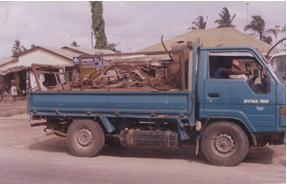
Wastes ready for disposal
Exercise 3
Visit dumping sites and industrial areas. List and classify the various types of wastes observed
- By their physical states
- As hazardous and non- hazardous wastes
- As recycled and non-recycled wastes.
Waste Disposal
Waste
disposal is the process of getting rid of waste materials that people
generate or the act of getting rid of unwanted materials and items of no
value or in excess.
Basic Principle of Waste Disposal
Outline basic principle of waste disposal
Principles of waste disposal
- Recyclable wastes should be separated from non- recyclable wastes
- Greater precaution should be observed when disposing hazardous wastes and it is important to separate them from other garbage
- It is important to use protective materials e.g. gloves when collecting and disposing wastes.
- Food and yard wastes should be separated from other garbage so as to be delivered to a compost site
- It is necessary to treat sewage before it is empted into the water bodies
- Sewage systems should be checked from time to time to control leakages
- Radioactive wastes should be disposed off by putting them in tanks and dipping them in deep oceans.
Proper Ways of Disposing Waste
Demonstrate proper ways of disposing waste
Methods of waste disposal
Most
cities and towns have waste collecting departments or private firms
that gather municipal solid wastes from homes and other buildings.
Incineration
This is the method which involves burning of waste products at high temperatures.
Land disposal
This
involves hauling garbage to an area owned by a community or a private
firm. Land disposal may range from unsanitary open dumps to sanitary
landfills.
Unsanitary open dumps are poor methods of waste disposal because they cause environmental problems such as:
- May produce bad odors
- Ruin the area’s appearance
- Rain water drains through refuse and carry harmful substances to nearby streams and to water used for drinking.
- Decomposing wastes produce flammable gas called methane and methane explosions may result.

Wastes disposed near community water source
Sanitary land fills
are intended to protect the environment. The waste is packed firmly by
tractors and covered with specially manufactured materials. The
covering is done in order to limit blowing papers, odors, fires and run
off of polluted water.
Note:
A secure sanitary land fill is lined with materials that prevent water
from carrying leachates (dissolved substances) from the refuse into
underground water supplies.
Waste bin collection
This
is intended to collect smaller quantities of wastes. The waste bins are
placed along the corridors or in every room or house which in turn is
emptied into big waste bins.
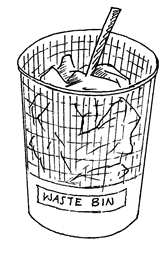
Sewage system
Sewage
is water that contains waste matter produced by human beings. It is
also called waste water. Sewage comes from toilets and sinks of homes,
restaurants, office buildings and factories Sewage system involves the
use of collection pipes or pit latrines where the sewage is periodically
removed and transported to a sewage works where it is treated to make
it harmless.
Recycling
Recycling
is the process of reusing the materials instead of throwing them away.
The waste products are used to manufacture the same or different
products such as:
- Cardboard or cow dung can be used to generate Biogas.
- Thermoplastics can be melted and remoulded.
- Organic wastes produced domestically or commercially can be composted.
- Kitchen refuse can be used to feed animals such as dogs, pigs, cattle, etc.
- Newspapers, magazines cartons and packing materials can be used to manufacture tissue papers.
- In Tanzania coffee husks are converted into a form of charcoal which is used for cooking
- Coconut and agricultural wastes can be converted into papers.
- Jute wastes can be converted into hard boards.
- Sewage and factory wastes can be purified to an extent that can be pumped into storage tanks and used for all domestic purposes.
- Glass bottles can be used for storing specimens or medicines.
Waste generation reduction
Waste
reduction is deliberate effort to produce fewer wastes. For example,
people can reduce waste by buying items that can last longer or have
less packing.
Effects of Poor Waste Disposal
Explain effects of poor waste disposal
The following are some of the effects of poor waste disposal;
- Produce bad odors
- Ruin the areas appearance
- Decomposing wastes produce flammable gas called methane and this may result to explosion of the gas which may cause a loss of material property and human life.
- Rain water drains through refuse and carry harmful substances to nearby streams and water used for drinking which may later lead to eruption of diseases like cholera and may kill organisms found in water
- Poor disposal of clinical wastes on land fill site may encourage bacterial breeding leading to possible infections in the area
- Unregulated dumps where waste is burned in the open can cause smoke and foul smelling air.
- Burning may also result into production of air pollutants which may affect the ozone layer and possible cause of respiratory diseases.
Exercise 4
Answer the below;
- Mention the four types of wastes according to their physical states.
- State the different ways through which wastes can be disposed
- Name two examples for each of the following
- Solid wastes
- Liquid wastes
- Gaseous wastes
- Hazardous wastes
- Non-hazardous wastes
- Recyclable wastes
- Non-recyclable wastes
What do you understand by the following terms?
- Waste
- Waste disposal
The following are solid wastes except
- Plastics
- Oil spills
- Broken glassware
- Junked automobiles
Wastes which are in the form of liquid or watery materials are termed as
- Sludge wastes
- Urine
- Liquid wastes
- Gaseous wastes
The act of getting rid of materials that are no longer needed in our environment is termed as
- Waste
- Sewage
- Waste disposal
- Incineration
Garbage or refuse are alternative names for
- Liquid wastes
- Solid wastes
- Gaseous wastes
- Sludge
Method of waste disposal whereby waste is dumped into a trench, compacted and covered with earth is called
- Open dump
- Incineration
- Waste reduction
- Landfill
Write TRUE or FALSE for the following statements.
- Carbon dioxide, nitrogen oxide and sulphur dioxide are examples of gaseous wastes ______________
- One way of disposing wastes is by recycling ___________
- In the classrooms, wastes such as papers, pens and plastic materials should be thrown anywhere through the windows _________
- One of the problems of poor waste disposal is that it reduces spread of diseases _________________
- More than 80% of the liquid wastes contain water _________
Proper Ways of Disposing Waste in the Surrounding Community
Suggest proper ways of disposing waste in the surrounding community
Activity 1
Suggest other proper ways of disposing waste in the surrounding community
The Concept of Health and Immunity
The Concepts of Health and Immunity
Explain the concepts of health and immunity
Health
is a state of physical, mental and social wellbeing. It involves more
than just the absence of disease. A truly health person not only feels
good physically but also has a realistic outlook on life and gets along
well with other people.
Elements of physical health
- Nutrition:Balanced diet provides all the food substances needed by the body for health growth and development.
- Exercise:Exercises help to keep the body healthy and fit. Vigorous exercises strengthen muscles and improve the function of the circulatory and respiratory system.Physical fitness benefits both physical and mental health and helps the body to withstand stress.
- Rest and sleep:Help to overcome fatigue and restore energy to the body. Everyone needs rest and sleepRest and relaxation are as important as sleep. After strenuous work or exercise a person may need a period of total rest.
- Cleanliness:Cleanliness prevents the growth of bacteria and other germs that can cause diseases. A regular bath or shower keeps the body free from dirt and odour. It also helps to prevent skin infections.
- Medical and dental care:Regular check ups by dentist and physician play an important role in safeguarding health. Doctors recommend that people seek medical care at first sign of illness. Early care can result in quicker cure and lower medical costs.
- Avoiding risk behaviours:Careful observation over a range of life style factors indicate that positive changes can bring about corresponding change in health status Risk behaviours that need to be avoided include: Smoking: cigarette smoking increases respiratory diseases such as bronchitis and increases risk of death from lung cancer and heart attack; Alcoholism: heavy, long term drinking has several effects on the body. It affects nervous system, cause liver disease (cirrhosis), etc; Drug abuse: drugs can cause addiction, long term harmful effects, disruption of normal life and some can lead to death.
MENTAL HEALTH
Mental health is as important as physical health and to a great extend depends on it.
Elements of mental health
Emotional development
Experiences
during childhood strongly influence a person’s mental health throughout
life. Children remain dependent for many years. At this period they
learn certain guidelines for relating to other people. Thus children
develop the knowledge necessary to deal with difficult situations in
life. This knowledge helps them maintain good mental health throughout
life.
Emotional
development does not end when a person reaches adulthood. An
individual's mental health continues to change from time to time. These
changes result from daily circumstances that cause either pleasure or
pain to the person.
Handling stress
Stress
handling is essential for avoiding both mental and physical illness.
Feelings of stress are the body’s response to any threatening or
unfamiliar situation. Causes of stresses include the following:
- Most severe stress may result from divorce or loss of job.
- Stress can also occur even in pleasant situations such as: Watching a football game, Waiting for a lovely one to return from a trip, etc.
If not handled properly stress can lead to
- Physical or emotional illness
- High blood pressure
- Stomach ulcers
No one can avoid stress but certain things that can be done to lessen it include:
- Regular exercises and sufficient sleep strengthens the body resistance to stress
- Relax by resting
- Taking a walk
- Meditating
- Working with hobby
Social relationships
Close
personal relationships with friends and relatives provide opportunities
for communication, sharing and emotional growth.Such relationships also
provide strength and support for dealing with challenging situations or
personal problems.
Importance of good health
- Enables people to enjoy life and have opportunity to achieve their goals.
- Sets someone free from attack by diseases.
- Enables people to work effectively and efficiently.
- Good health helps people to participate in social issues.
- Enables mothers to deliver healthy babies.
- Raises the family economy which in turn ensures peace and security within the family and the surrounding community.
Types of Body Immunity and Their Importance
Mention types of body immunity and their importance
Immunity
is the ability of the body to resist certain diseases and
poisons.Immunity can also be defined as the ability of the body to
defend itself against infectious agents, foreign cells and even abnormal
cells such as cancer cells
The scientific study of immune system is called immunology.
Immune system
The
immune system comprises of a group of cells, molecules and tissues that
help defend against disease and other harmful invaders.
The
invaders include disease-causing organisms (pathogens) such as
bacteria, fungi, protozoa, virus and worms.A key feature of immune
system is its ability to destroy foreign organisms, leaving the body’s
own health tissues alone.
The immune system consists of white blood cells, lymph nodes, spleen, liver and bone marrow.
Types of immunity
Basically there are two types of immunity
- Natural immunity
- Artificial immunity
Natural immunity
Natural immunity is that which an individual is born with. Natural immunity can be divided into categories, namely:
- Natural active immunity
- Natural passive immunity
- Natural active immunity:This immunity develops in a body after a natural infection. After infection, antibodies are produced in the body. The antibodies normally reside in the blood or in other parts of the body. The body can make more antibodies whenever the pathogen tries to attack the body again.
- Natural passive immunity:This type of immunity is achieved during development of the foetus where antibodies pass from the mother to the foetus through placenta or through the mother’s milk after the baby is born. The antibodies disappear from the infant a few months after birth.
Artificial immunity
Artificial immunity is that which an individual acquires during his/her life time.
There are two types of artificial immunity
- Artificial active immunity
- Artificial passive immunity
Artificial active immunity
This is immunity introduced in the body by immunization. Immunization
is the process of introducing a vaccine into the body of an animal in
order to increase its ability to produce antibodies. These antibodies
protect the person if he/she is exposed to the actual disease.
- Most vaccines contain disease-causing bacteria or viruses that have been killed.
- Others consist of the live germs but in a weakened form or attenuated.
- Toxoid vaccines are made from poisons produced by disease-causing organisms.
- These poisons are chemically treated so that they provide immunity without causing disease.
- Some vaccines are made from parts of disease-causing organisms.
Vaccines
have been developed against many diseases such as chicken pox,
diphtheria, influenza, measles, meningitis, mumps, pneumonia,
poliomyelitis, cholera, rabies, rubella (German measles), tetanus,
whooping cough and yellow fever.Vaccines can be taken through,
injection, rubbing or the mouth (orally).
Artificial passive immunity
This
type of immunity involves the injection of serum into the body of an
organism. Serum contains antibodies that have been formed in another
person or animal. It provides immediate protection from infection and
lasts for weeks or months and after that period there are no antibodies
left in the body and therefore no immunity.
Factors which Affects Body Immunity
State factors which affects body immunity
Factors which may lead to low of body immunity
- Alcohol and other toxic drugs.
- Lack of immunisation.
- Lack of proper balanced diet.
- Inability of the body to produce antibodies and white blood cells.
- Pathogens of HIV (Human Immunodeficiency Virus)
Personal Hygiene and Good Manners
Concepts of Personal Hygiene and Good Manners
Explain concepts of personal hygiene and good manners
Personal hygiene refers to individual cleanliness. It mirrors on how one takes care of oneself.
Good manners refer to acceptable person’s ways of behaving towards others.
Principle of Personal Hygiene and Good Manners
Outline principle of personal hygiene and good manners
Principles of personal hygiene
- Eating balanced diet regularly to maintain good health
- The body should be washed daily and hair combed regularly
- Teeth should be brushed after every meal
- The nails should be cut short
- Wear clean and ironed clothes
- Avoid risk behaviours like smoking cigarettes, drinking alcohol, prostitution and others
- Wash your hands with soap before and after meals and after visiting a lavatory
- Have enough sleep and rest.
- Take regular exercises to maintain fitness
- Underwears should be changed regularly
- Bedding should be changed regularly
Principles of good manners
- Respect – an individual should have good respect such as: showing great respect to elders by helping and greeting them decently; being polite and humble; and talking in a clear and calm voice.
- Tidiness – every body should look smart all the time. An individual should: keep the bedroom neat; brush shoes; wear clean and ironed clothes; cut nails and hairs short; comb or plait the hair nicely, etc.
- Discipline – an individual should be well disciplined e.g. avoid using bad language; cover, your mouth when sneezing, yawning or coughing; and portray good postures e.g. sitting properly in class and at home.
- Good eating habits (table manners) which include the following: Eating at regular time intervals; Avoid talking with food is in the mouth; Do not pile food up on your plate. Serve yourself with a reasonable amount while considering others; In case the food given is not good, make an excuse that you are not hungry or not feeling well rather than showing or saying that the food is not good; Don’t tell stories that will make others laugh when eating; Always wash your hands before and after eating
- Putting things in proper order: All objects in the surrounding should be kept properly and in a right place e.g.: Rubbish should be disposed as required; Books should be kept in shelves; Cooking and eating utensils should be kept well in the cupboards; Clothes should be properly ironed, folded and kept.
Requirements of Personal Hygiene and Good Manners
Mention requirements of personal hygiene and good manners
Requirements
of personal hygiene and good manners include towel, soap, comb, brush,
basin, toothbrush, a pair of scissors, razor blades, water and
cosmetics.
Ways of Maintaining Proper Personal Hygiene During Puberty
Outline ways of maintaining proper personal hygiene during puberty
Puberty
is the adolescent period. It is the period when one experiences
physiological changes in the body. The physiological changes mark the
beginning of adolescence.Puberty begins the age of 10 to 12 years for
girls and 11 to 14 years for boys.
Ways of maintaining proper hygiene during puberty
- Both sexes should wash their bodies regularly
- During menstruation, girls should use good quality sanitary towels or pads and change them as necessary.
- Boys should undergo circumcision and females should avoid female genital mutilation
- Underwears should be washed and changed regularly
- Both boys and girls should avoid irresponsible sexual behaviours such as prostitution and rape so as to keep away from sexually transmitted diseases (STDs)
- Hair in the armpits or pubic areas should be shaved or trimmed.
The Importance of Personal Hygiene and Good Manners
Explain the importance of personal hygiene and good manners
Importance of personal hygiene and good manners include:
- Reduces chances of pathogen infection
- Enhances social acceptance in the society
- Prevents one from getting choked while eating
- Maintains natural body state
- Maintains personality of an individual in the society
- One becomes respected by others
- Maintains health of the body and mind
Infections and Diseases
The Meaning of the Terms Infection and Disease
Explain the meaning of the terms infection and disease
Infection is the invasion of disease-causing micro-organisms into the body. Disease is
the disturbance of the normal state of the body. It is a disordered
state of an organ or organism. Infections normally lead to diseases.
Classification of diseases
Diseases are classified as:
- Infectious (communicable) diseases
- Non-infectious (non-communicable) diseases
Infectious (communicable) diseases
These
are diseases which can be transmitted from one person to another
person. Communicable diseases are normally caused by micro- organisms
like viruses, bacteria, fungi and protozoa, etc
Examples
of infectious diseases include: malaria, typhoid, tuberculosis,
cholera, gonorrhoea, syphilis, ebola, AIDS, chlamydia, etc.
Many of the infectious diseases are transmitted by a way of:
- Droplet of liquid
- Air
- Food or water
- Sexual intercourse
- Touch or contact e.g. ringworm
- An intermediate organism called a vector e.g. malaria by mosquito and bubonic plague by rat flea.
Diseases causing micro-organisms can enter the body through mouth, nose, skin, vagina, anus, penis, ears, eyes and open wounds.
Infectious diseases can be:
- Epidemic disease - a disease that affects a larger number of people in a short period of time in a region for example, cholera, meningitis, bubonic plague, rift valley fever (RVF), tuberculosis, etc.
- Pandemic disease - a communicable disease which is wide spread over a country continent or the whole world, for example HIV/AIDS, etc.
- Endemic disease - a communicable disease which occurs in an area continuously for example, bilharzia, sexually transmitted diseases (STDs), malaria (an endemic disease in tropical regions) and cholera (endemic in Asia).
Non- infectious (non-communicable) diseases
These are diseases which can not be transmitted from one person to another. Examples of non-communicable diseases include:
Environmental diseases e.g.:
- Lung cancer
- Asbestosis
- Asthma
- Coronary (heart) diseases
- Alcoholism
Deficiency diseases
These diseases are due to lack of certain nutrients in the diet. They may be due to lack of one of the main food groups e.g.:
- Kwashiorkor: lack of protein
- Marasmus: lack of both carbohydrate and proteins
- Night blindness: lack of Vitamin A
- Beriberi: lack of Vitamin B1
- Scurvy: lack of Vitamin C
- Rickets: lack of Vitamin D, calcium, and phosphorous
- Anaemia: lack of iron
- Goitre: lack of iodine
- Excessive bleeding (haemophilia): lack of Vitamin K
Genetic and congenital disorders e.g.
- Colour blindness
- Haemophilia
- Sickle cell anaemia
- Albinism
- Down’s syndrome
- Klinefelter’s syndrome
- Turner's syndrome
Ageing and degenerative diseases e.g.
- Long sightedness due to weakening of eye muscles
- Arteriosclerosis (hardening of arteries)
- Arthritis – ageing of joint and bone tissues
Mental illness e.g.
- Schizophrenia
- Senile dementia
- Depression
Hormonal diseases e.g.
- Diabetes mellitus
- Diabetes inspidus
- Cretinism
Common Infections and Diseases
Mention common infections and diseases
Common Infections and Diseases include the following:
- CHOLERA
- MALARIA
- TYPHOID
- TUBERCULOSIS (T.B)
- MENINGITIS
- AMOEBIC DYSENTRY (AMOBIASIS)
- PLAGUE
- TRYPANOSOMIASIS (SLEEPING SICKNESS)
- BILHARZIA (SCHISTOSOMIASIS)
- ATHLETE’S FOOT
- GONORRHOEA
- SYPHILIS
- CLAMYDIA
- GENITAL HERPES
- GENITAL WARTS
- HEPATITIS B
- TRICHOMONIASIS
- CANDIDIASIS
The Causes, Symptoms, Mode of Transmission and Effects of Common Infections and Diseases
Explain the causes, symptoms, mode of transmission and effects of common infections and diseases
CHOLERA
Cause:It is caused by a bacterium known as Vibrio cholerae
Symptoms
- Severe watery diarrhoea and vomiting
- Body weakness
- Fast and weak pulse
- Low blood pressure
- Wrinkled skin and sunken eyes due to dehydration
- Rapid loss of weight
Transmission
Cholera is transmitted through:
- Food or water borne material contaminated with faeces from infected person
- Handling of contaminated objects
- Vectors e.g. flies moving from human faeces to food.
MALARIA
Cause:Malaria is caused by a protozoan called plasmodium.
Signs and symptoms
- High fever. Fever may be continuous, irregular or twice daily.
- Vomiting
- Lack of appetite
- General body weakness
- Joint pains
Transmission
Malaria
is transmitted by a female anopheles mosquito. The mosquito sucks blood
containing plasmodium from the infected person and introduces them into
the body of a health person. In rare cases malaria can be transmitted
through blood transfusion from the infected person to a health person.
TYPHOID
Cause:It is caused by a bacterium known as Salmonella typhus. The bacteria damage the intestinal wall and other parts of the body like gall bladder, spleen and bone marrow.
Signs and symptoms
- Mild fever
- Slight abdominal pains
- Diarrhoea
- Vomiting
- Ulceration and rupture of intestine
Transmission
The disease is spread through
- Contaminated water and food
- Handling of contaminated objects
- Vectors of the disease e.g. houseflies
TUBERCULOSIS (T.B)
Cause:T.B is caused by bacterium called Mycobacterium tuberculosis. The bacteria can attack the lungs or any part of the body and destroy tissues.
Signs and symptoms
- Loss of weight
- Coughing
- Fever
- Chest pain
- Blood in the sputum
Transmission
- Through droplet infection
- Through drinking milk from infected cattle
- T.B is common in overcrowded areas with poor sanitation
Appropriate Preventive and Control Measures for Common Infections and Diseases
Suggest appropriate preventive and control measures for common infections and diseases
Prevention of Cholera
- Wash hands after visiting toilet or latrine
- Food should be well cooked and drinking water should be boiled and well filtered
- Hands should be washed before and after eating
- Food should be well covered
- Utensils should be washed thoroughly
- Maintain general environmental cleanliness
Control of Cholera
- The infected person should be isolated
- Special precautions should be taken when handling the infected person
- Vaccination is possible
Treatment
- The disease can be treated by using antibiotics such as tetracycline, chloramphenicol
- Administering rehydration salt solutions
Effects
- May lead to death
- Extra medical expenses
- Failure to perform daily activities
Prevention and control of malaria
- Spraying insecticides to destroy adult mosquitoes
- Introducing fish eating mosquito into stagnant water e.g. Gambusia that feed on mosquito larvae.
- Draining stagnant water to remove the breeding sites for mosquitoes
- Use of mosquito nets to prevent mosquitoes from biting people
- Screening the windows with mosquito-proof wire-mesh to prevent entry of mosquitoes in the house through the windows.
- Wear long-sleeved shirts and trousers to prevent mosquito bites.
- Mosquito larvae and pupa can be killed by spraying oil into stagnant water that cannot be drained.
- Taking regular weekly doses of preventive drugs to kill parasites on entry.
- Cutting bushes around the houses to destroy shelter for mosquitoes
- Using mosquito repellents to flee away the mosquitoes
Treatment
Anti-malarial drugs can be used to treat the disease e.g. quinine, fansider, mefloquine, chloroquine, etc.
Effects
- Can cause death
- Can lead to mental confusion in case of cerebral malaria
- Paralysis and unconsciousness
- Drowsiness
- Anaemia
- Miscarriage
- Inability to participate in economic activities
- Increased medical expenses
Prevention and control of Typhoid
- Wash hands after visiting the toilet
- Food and water must be protected from dust and flies
- Wash hands before and after eating
- Drink boiled water and eat properly cooked food; fruits should be washed thoroughly before being eaten.
- Vaccination can also help to control the disease
Treatment:The disease can be treated by using antibiotics such as tetracycline, chloramphenicol, etc.
Effects
- Can cause death
- May cause ulcers and finally rupture of the intestine
- Enlarged spleen
Prevention and control of T.B
- Elimination of the conditions under which TB thrives e.g. overcrowding, poverty level living and inadequate nutrition.
- Observing general personal hygiene, especially when coughing and sneezing.
- Early BCG (Bacillus Calmette-Guérin) VaccineThe Vaccine may be used for either of two reasons:(i) Protecting newly-born babies or children at particular risk of infection.(ii) Immunization of young persons or at risk groups in the community.
- Keeping children, in particular, away from risk situations.
- The use of sterilized milk and pasteurized dairy products
- Contact tracing so that risk to others may be minimized
Treatment:Antibiotics such as streptomycin can be used to cure the disease.
Effects of T.B
- Causes a number of deaths.
- Abscess full of pus may form near the lump in the spine.
- Shortening and thickening of the chest in case of TB of the spine.
Human Immune Deficiency Virus (HIV)
Acquired Immune Deficiency Syndrome (AIDs)
The Meaning of HIV/AIDs, STIs, and STDs
Explain the meaning of HIV/AIDs, STIs, and STDs
HIV
stands for Human Immunodeficiency Virus, and AIDS for Acquired Immune
Deficiency Syndrome. It is thought that AIDS originated from central
Africa. The HIV Virus which causes the disease appears to have migrated
Via Haiti to the USA. The term acquired means become infected and immune
deficiency means lack of immunity
Sexually
transmitted infections (STIs), also referred to as sexually transmitted
diseases (STDs) and venereal diseases (VDs), are infections that are
commonly spread by sex, especially vaginal intercourse, anal sex and
oral sex. Most STIs initially do not cause symptoms.
There
are more than 30 different sexually transmissible bacteria, viruses and
parasites. The most common STIs they cause are gonorrhoea, chlamydia,
syphilis, trichomoniasis, chancroid, genital herpes, genital warts,
human immunodeficiency virus (HIV) infection and hepatitis B infection.
Sexually Transmitted Infections (STIs) and Sexually Transmitted Diseases(STDs)
Causes, Symptoms, Mode and Transmission and Effects of HIV/AIDs, STIs and STDs
Explain causes, symptoms, mode and transmission and effects of HIV/AIDs, STIs and STDs
Cause
Is
caused by HIV (Human Immunodeficiency Virus).The Virus attack the
body's immune system weakening it and making it more susceptible to
infections and some cancers.
It
is important to realize that, infection with the HIV virus does not
necessarily result in AIDS. As with other diseases, some people remain
symptomless and are said to be carriers.
Types of HIV Viruses
There
are two major types of HIV Viruses, HIV 1 and HIV 2.HIV 1 is the most
predominant virus and it is more easily transmitted while HIV 2 occurs
in a small number of people in West Africa, Angola, Mozambique and some
parts of India. It is less virulent.
Where
in the body can you find HIV viruses? The virus in the body can be
found in the following body fluids: blood, semen, vaginal fluid, tears,
saliva and urine and breast milk.It is observed that semen, blood and
vaginal fluids are more infectious.
Signs and symptoms of AIDS
A
person infected with HIV may start to show signs of illness as from few
weeks to many years. The infected individual may experience the
following signs and symptoms:
- Tremendous loss of weight
- Persistent fever
- Chest pain
- Diarrhoea for no obvious cause
- Coughing for more than one month
- Shortness of breath getting worse over several weeks
- Itchy skin rashes
- Thrush in the mouth and throat
- Loss of hair
Transmission
AIDS can be transmitted through any of the following ways:
- Sexual intercourse with an infected person
- Transmission from the mother to the baby during pregnancy, birth or breast feeding.
- Sharing sharp objects with infected people e.g. sharing needles, razor blades, tooth brushes etc.
AIDS-related complex
The
infected person may exhibit a variety of conditions. Common bacterial,
fungal and viral infections attack the victim. These are known as
opportunistic infections. They include diseases like pneumonia, T.B,
meningitis, candidiasis, cancer e.g. Kaposi’s sarcoma, etc.
The Preventive and Control Measures of HIV/AIDs, STIs and STDs
Outline the preventive and control measures of HIV?AIDs, STIs and STDs
Prevention of HIV/AIDS
- Use the ABC method to prevent the disease: A-Abstain from sex B- Be faithful to your only partner C- use Condom. This means that you are advised to abstain completely from sexual intercourse. If you can't then have one faithful partner and if this seems to be difficult then use condoms.
- Avoid sharing sharp tools with the infected individuals
- Blood transfusion should be done prior to HIV screening
- Pregnant mothers should attend clinic so that they get treatment that will prevent HIV transmission from the mother to the baby.
- Avoid all the risk behaviours, situations and practices that may enhance HIV transmission. The risk behaviours include drug abuse, prostitution, rape, anal sex, oral sex, alcoholism, unsafe sex, roaming in bars, guest house, etc.
Management of STIs and HIV/AIDs
Ways of Avoiding Risky Situations, Risky Behaviours and Practices
Explain ways of avoiding risky situations, risky behaviours and practices
Risky behaviours can be avoided by:
- Practising safe sex
- Applying non- penetrative sex e.g. kissing, hugging, etc.
- Delaying technique e.g. I’m required at home just now lets meet tomorrow
- Discouraging/negative words e.g. I’m HIV positive
- Discouraging peer pressure
- Engaging in sports and games which distract one’s mind from concentrating to sex.
- Showing a sense of dislike to express the way you are by wearing T-shirts, caps with various messages e.g. ‘say no to sex’, ‘practice safe sex’, ‘Mimi nimepima wewe je?’, ‘AIDS kills’ etc
Necessary Skills for Avoiding Risky Behaviours, Practices and Situations
Demonstrate necessary skills for avoiding risky behaviours, practices and situations
So far there is no cure for HIV/AIDS, but treatment is available. However, the disease can be prevented by the following ways:
- Avoid sexual intercourse. It is possible to live a healthy normal life without having sexual intercourse.
- Use a condom correctly every time you have vaginal sex. It is often hard to be sure that your partner is truly faithful and unaffected.
- Avoid multiple partners. Don’t have more that one sexual partner.
- Avoid alcohol and drug abuse as they affect your decision making ability thus leading you to unsafe sex.
- Avoid sharing needles and other skin piercing tools. Needles can be contaminated and HIV can survive in a syringe for a month or longer.
- Avoid contracting other STIs because they increase the chances of HIV and AIDS infection. For those who have been infected, they must get proper treatment from a qualified medical practitioner.
- Avoid risky behaviours such as going to night clubs, negative peer pressure and taking alcohol or drug abuse. These might put you in danger of being infected.
- Prevent mother to child transmission by: (a) counselling and treating the mother; (b) using caesarean section as a mode of delivery; (c) use of alternative feeding (milk) instead of breastfeeding; and (d) not sharing breast milk.
- Prevent transmission through organ and tissue transplants by screening both the donor and the patient.
- Prevent minor injuries which might lead to infection. This can be achieved through:(a) use of gloves; (b) use of sterile instruments; (c) avoiding direct contact with contaminated body fluids;(d) proper handling of contaminated human waste; and (e) decontaminating soiled surfaces and lined.
- Effective treatment of the infected through: (a) administering anti-retroviral therapy; and (b) prompt treatment of opportunistic infections.
Care and Support of people living with HIV/AIDS (PLWHA)
The Importance of Providing Care and Support to PLWHA in the Family Community and at School
Explain the importance of providing care and support to PLWHA in the family community and at school
Importance of care and support to people living with HIV/AIDS (PLWHA) include the following:
- It enables them to prolong their lives in case they are administered with ARVs.
- It reduces fear of death.
- It enables them to perform their daily activities without fear.
- It reduces depression and self dislike.
Necessary Care and Support Services Provided to PLWHA in the Family, Community and at School
Outline necessary care and support services provided to PLWHA in the family, community and at school
People
who are infected with HIV need care and support form their friends,
families and the community, especially when they are ill. Friends and
family members sometimes worry that they might be infected when caring
for a person with HIV.
HIV
cannot be passed on by touching, hugging, coughing, or sharing eating
utensils. It is possible for people who are infected with HIV to live
long healthy lives. You can help those who are infected by:
- showing love, respect and support;
- knowing the facts about HIV/AIDS and talking openly about the disease;
- helping to reduce stress and stressful situations;
- helping to provide balanced and nutritious meals;
- seeking for support from family and friends as well as from other people who are HIV positive;
- encouraging them to live with hope;
- encouraging them to be active. Do not stop them from doing things they like;
- spend time with the sick person. For example help them to prepare their meals, clean their rooms, make their beds and take them to a walk if they can walk. Encourage family and friend to do this too;
- encouraging them to get treatment if they are sick. Most infections are easily treated and cured, even if a person is HIV positive.
- Cleaning their houses, utensils, clothes, etc.;
- trying to relieve any pain the person may be feeling, for example by administering pain killers; and
- treating them with respect and dignity making them as comfortable as possible.
Precautions to be taken when handling PLWHA and STIs
- There may be situations where you need to clean up body fluids or blood from someone infected with HIV. Do not touch body fluids such as blood, stool and urine with your bare hands. It is important to use rubber or plastic gloves or other barriers such as plastic bags or thick cloth to prevent direct contact. Make sure that you have these easily available at all times.
- Wash the gloves or plastic bags in hot water every time after you have used them. Keep clothes and bedding with blood, diarrhoea or body fluids away from other washings.
- Wash the bedding and clothes with soap. Hang them where there is a plenty of sunshine and air circulation to dry well.
- Do not share toothbrushes, razors, skin piecing instruments, or needles
- Cover your wounds with a clean and sterile bandage. Buy disposable gloves so that once used they are discarded.
- Dispose off properly the vomits or bandages used when dressing wounds.
- Learn about the ways HIV can and cannot be transmitted. Talk to your friends and family. Contact your local clinic for more information
The Effects of Discrimination and Stigma to People Living with HIV/AIDS to the Individual, Family and Society
Explain the effects of discrimination and stigma to people living with HIV/AIDS to the individual, family and society
HIV-related
stigma and discrimination exist worldwide, although they manifest
themselves differently across countries, communities, religious groups
and individuals. Possible consequences of HIV-related stigma could be:
- loss of income and livelihood
- loss of marriage and childbearing options
- poor care within the health sector
- withdrawal of caregiving in the home
- loss of hope and feelings of worthlessness
- loss of reputation
Ndugu mwalimu/mwanafunzi kama unapata changamoto yoyote ile
kuhusu upatikanaji wa NOTES HIZI kwenye website hii, tafadhari wasiliana nasi kwa
simu no/hotline. 0759-104804 Paschal kabonge
barua pepe. paschalkabonge2@gmail.com
au andika maoni yako kwenye sehemu ya comment hapa chini ya post hii.
Kumbuka: mitihani yote inapatikana bureeee kabisa.
Asante.
ELIMU NI HAKI KWA WOTE.





1 Comments
Please with chemistry
ReplyDelete